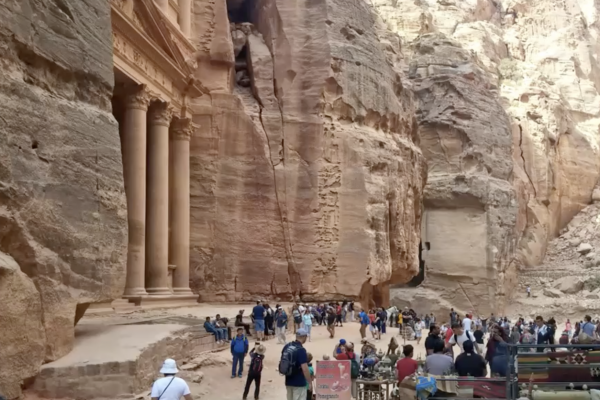
Top Places to Visit in Jordan & Israel
If you're thinking about new places to travel in the future, two countries well worth considering are Jordan and Israel. Evergreen Club member Mary W. has shared a presentation with us on the travels she took with her friend Felicity to these two scenic countries, which are rooted in ancient history. Come along for the ride as we explore the beautiful sights via this travel presentation.
Watch the full presentation on our YouTube channel here: https://youtu.be/Yv-iuKgkIck
Petra, Jordan
The first stop on Mary and Felicity's trip was Petra, Jordan, which is located near the Red Sea. Some think that this area is where Moses crossed over the sea. It houses many trade routes that were used in ancient times, including ones used by the kings who brought frankincence and myrrh to the birth of Jesus. It's about a 65 day camelback ride from the southern part of Saudi Arabia up to Petra, where traders could then export their goods across the Mediterranean Sea.
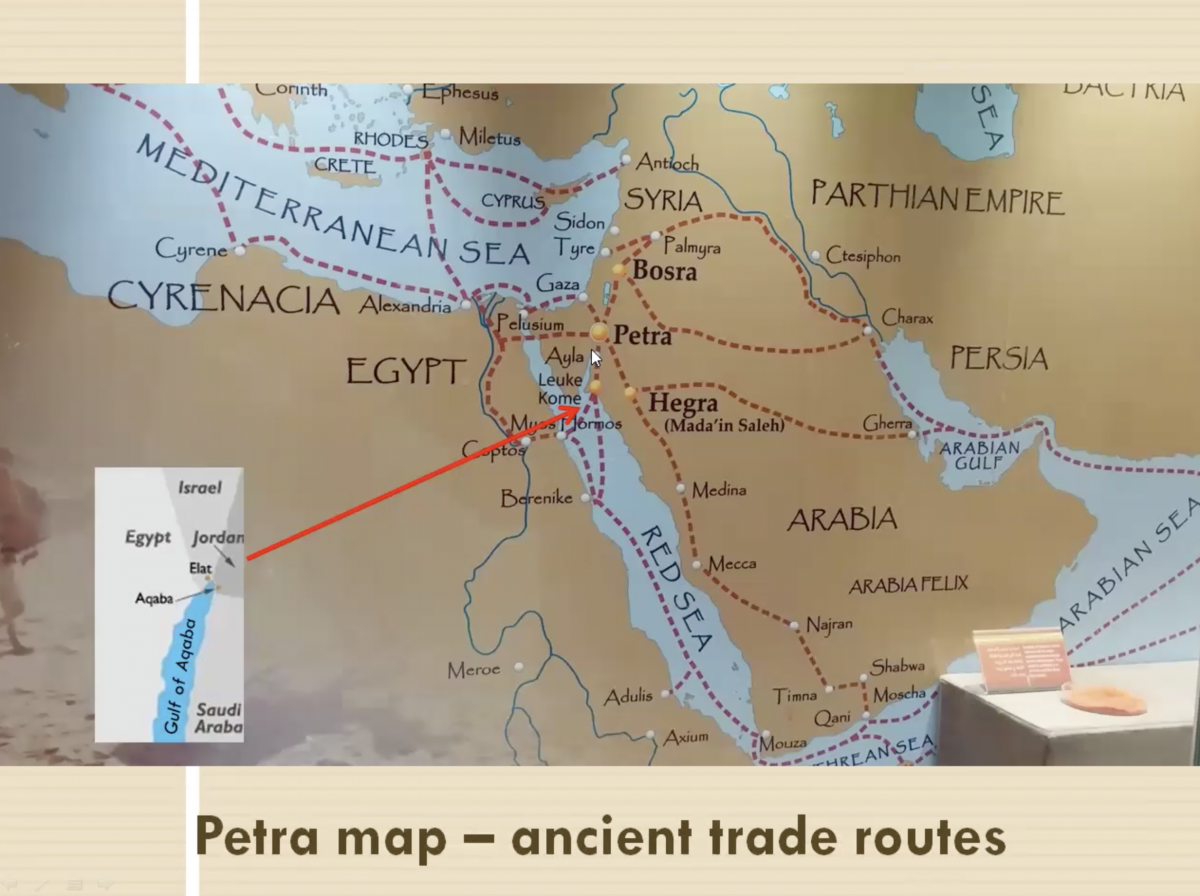
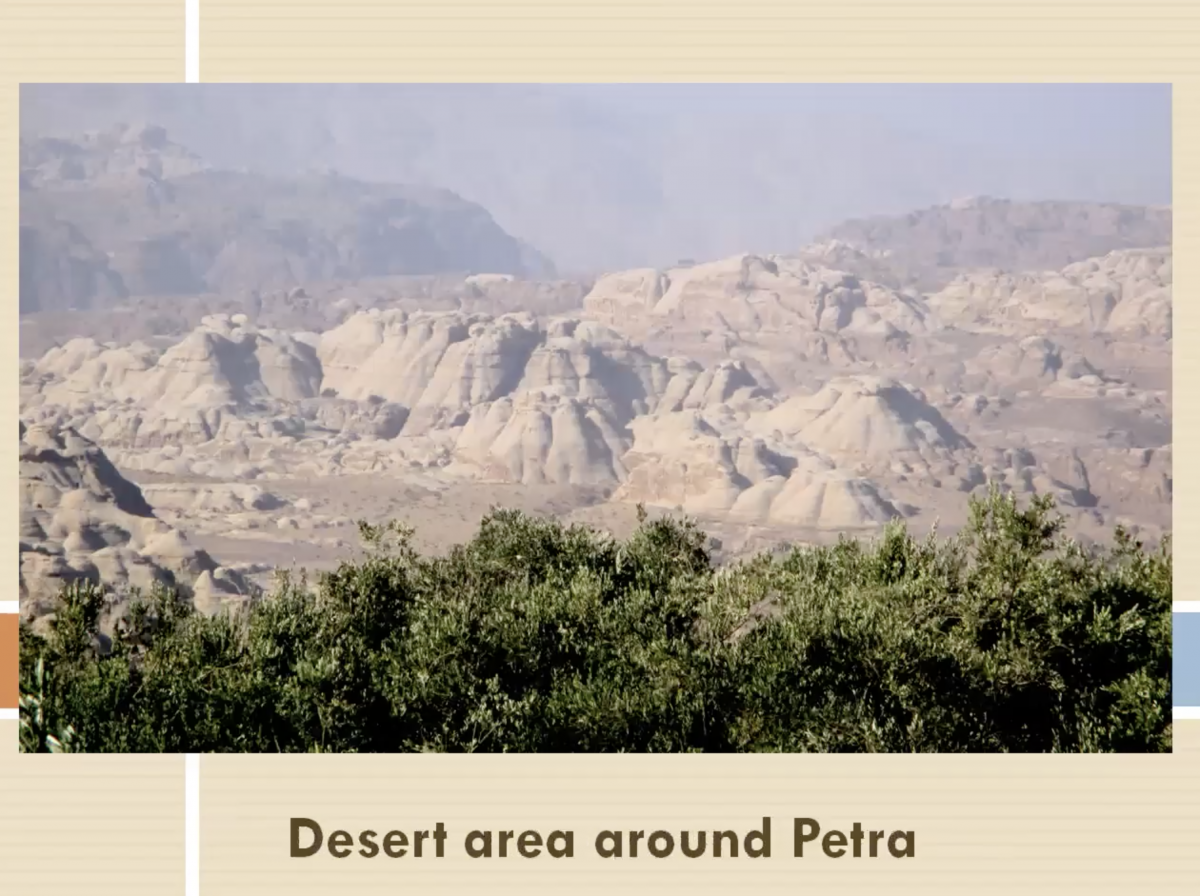
The Nabateans were the original residents of Petra, and they initially were tent dwellers who eventually became very rich merchants. One source of their riches was tolls they collected from merchants passing through along the trade routes.
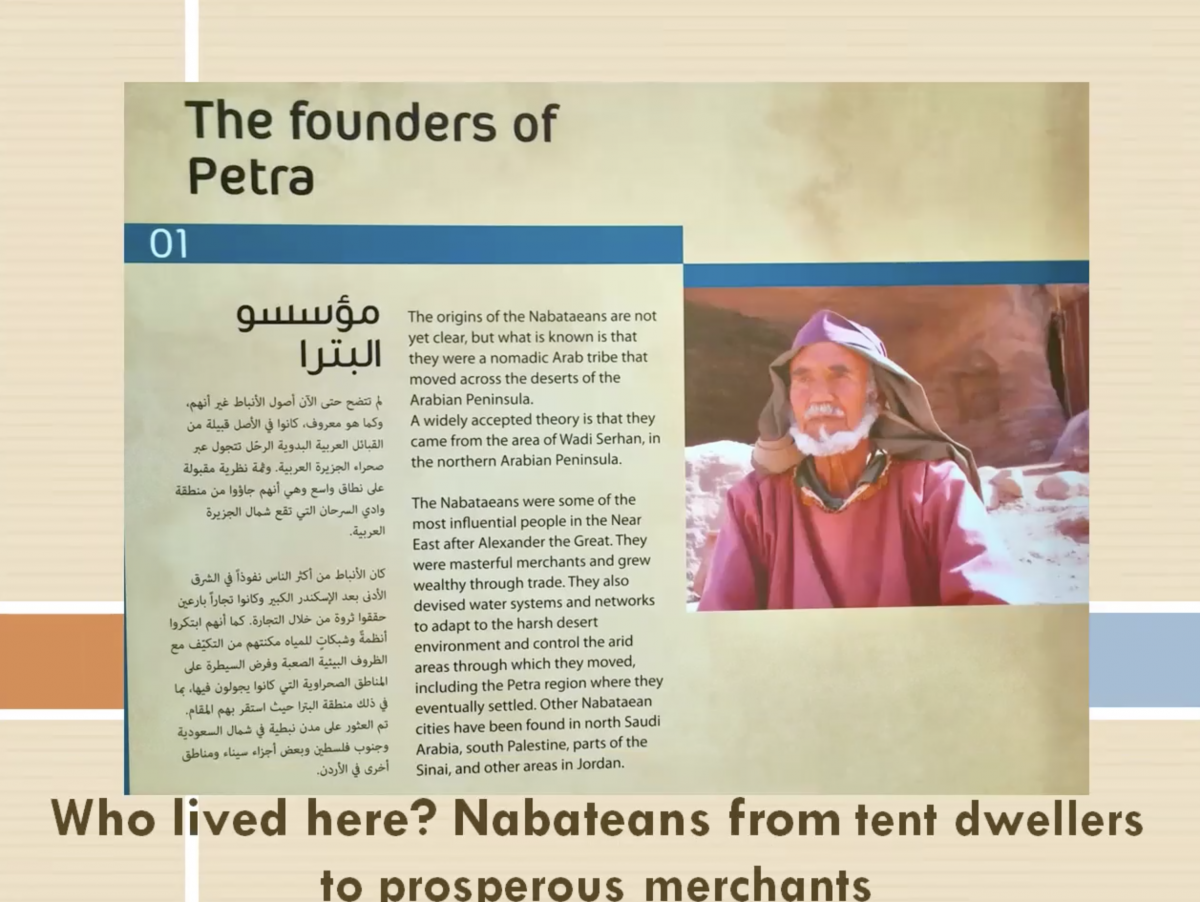
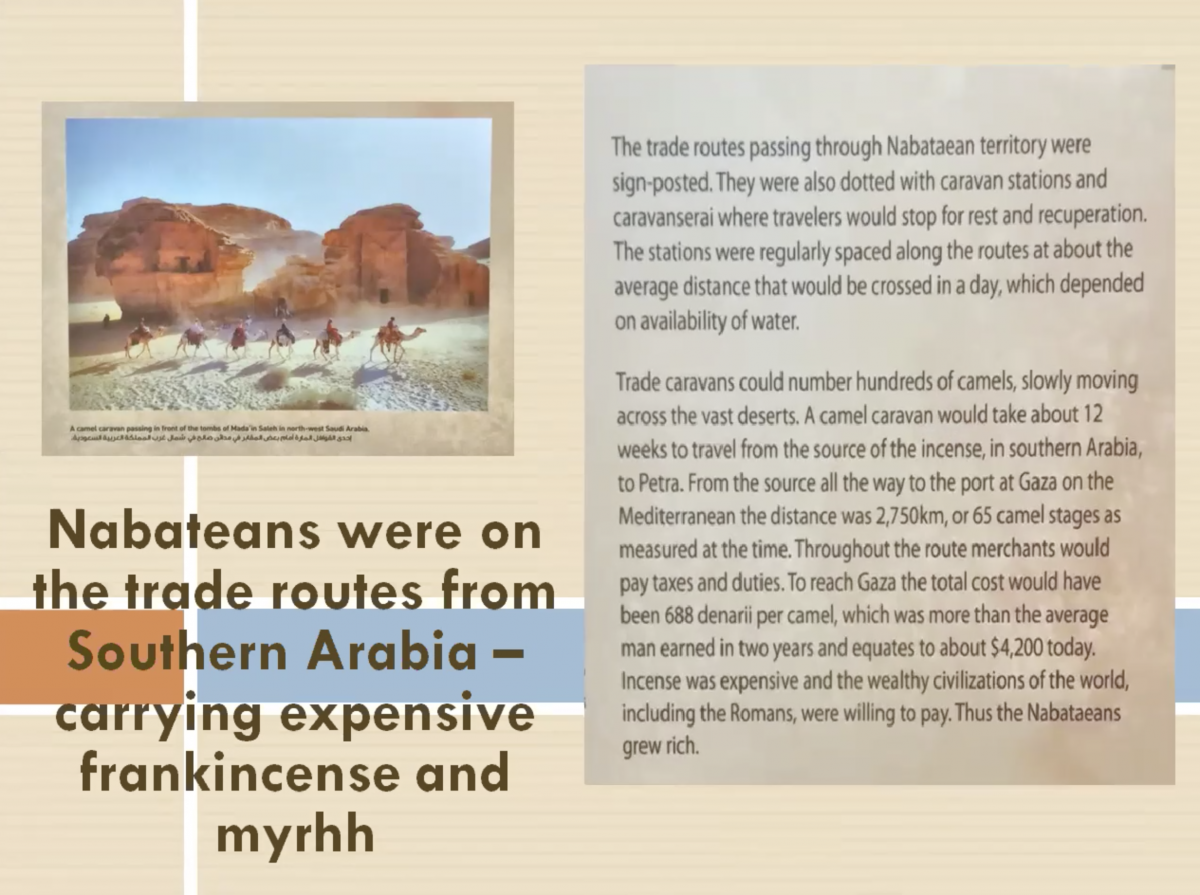
Many different groups of people from multiple eras of history lived in Petra, including those from Persian, Roman, and Byzantine empires. Petra's ideal location along the trade route made it very susceptible to invasion by nearly anyone who came through, including Alexander the Great.
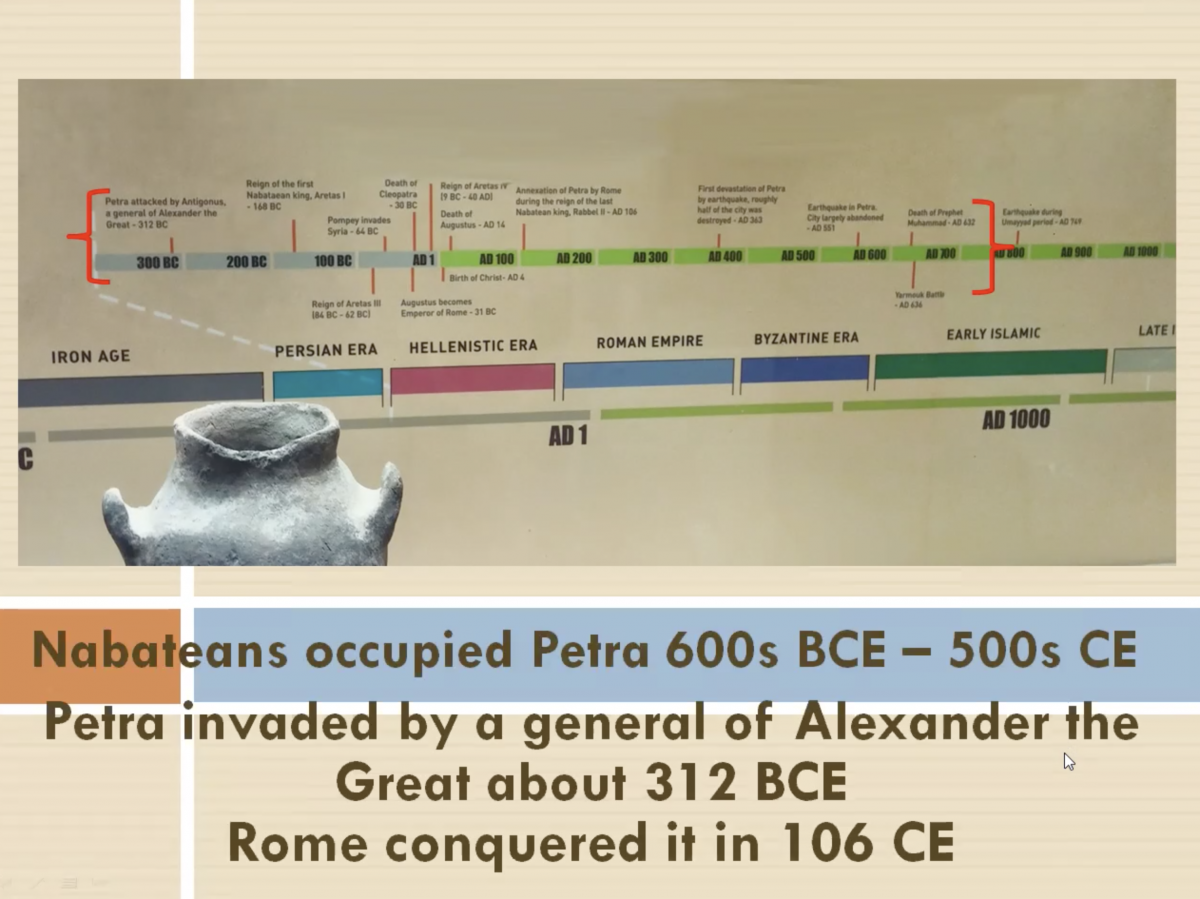
Water in Petra
Petra has a large amount of dry riverbeds (called "wadis"), which are shown in light grey on the map below. Jordan is a very dry country, and sometimes only gets about 6 inches of rain per year. The Siq is one of the main roads going through Petra, and there is a lot to see along it, including a treasury, a theater, and royal tombs. Expect to walk about 5 miles if you're interested in covering the majority of it.
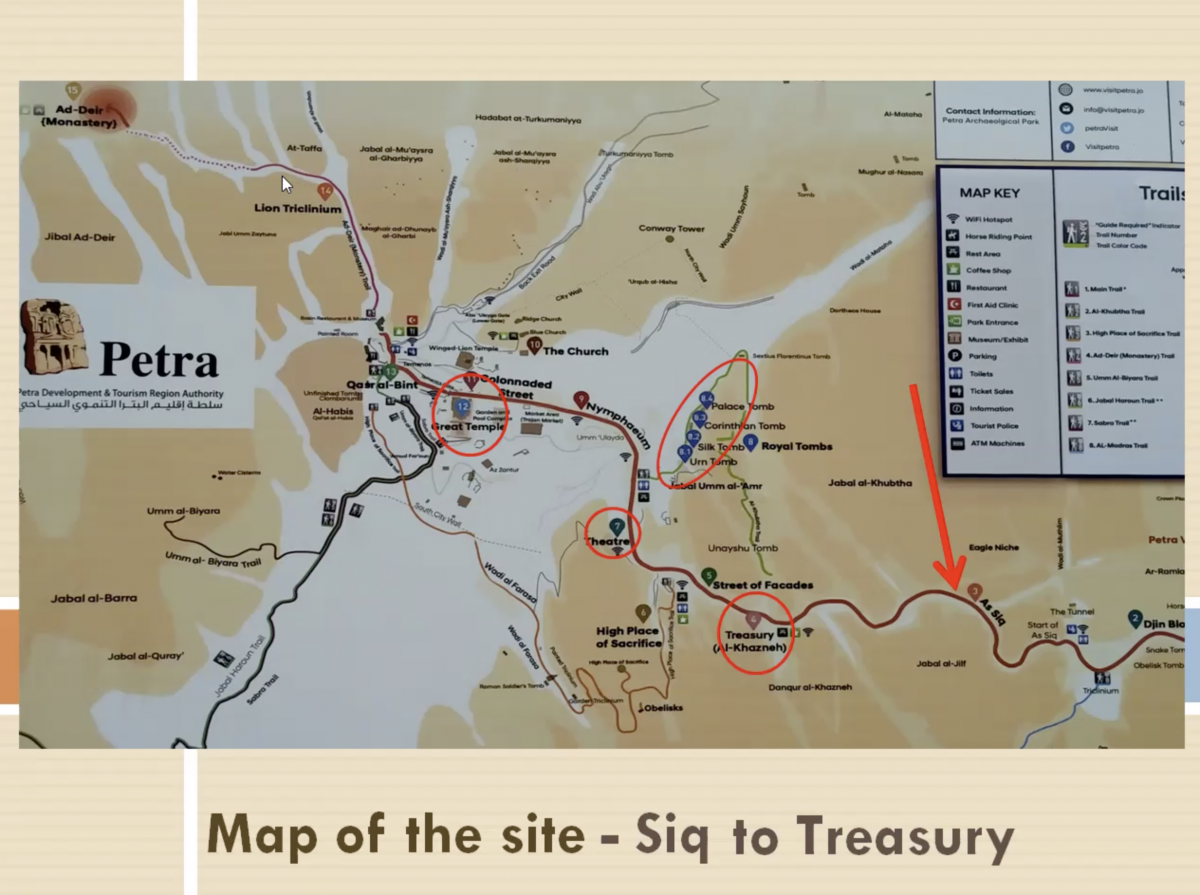
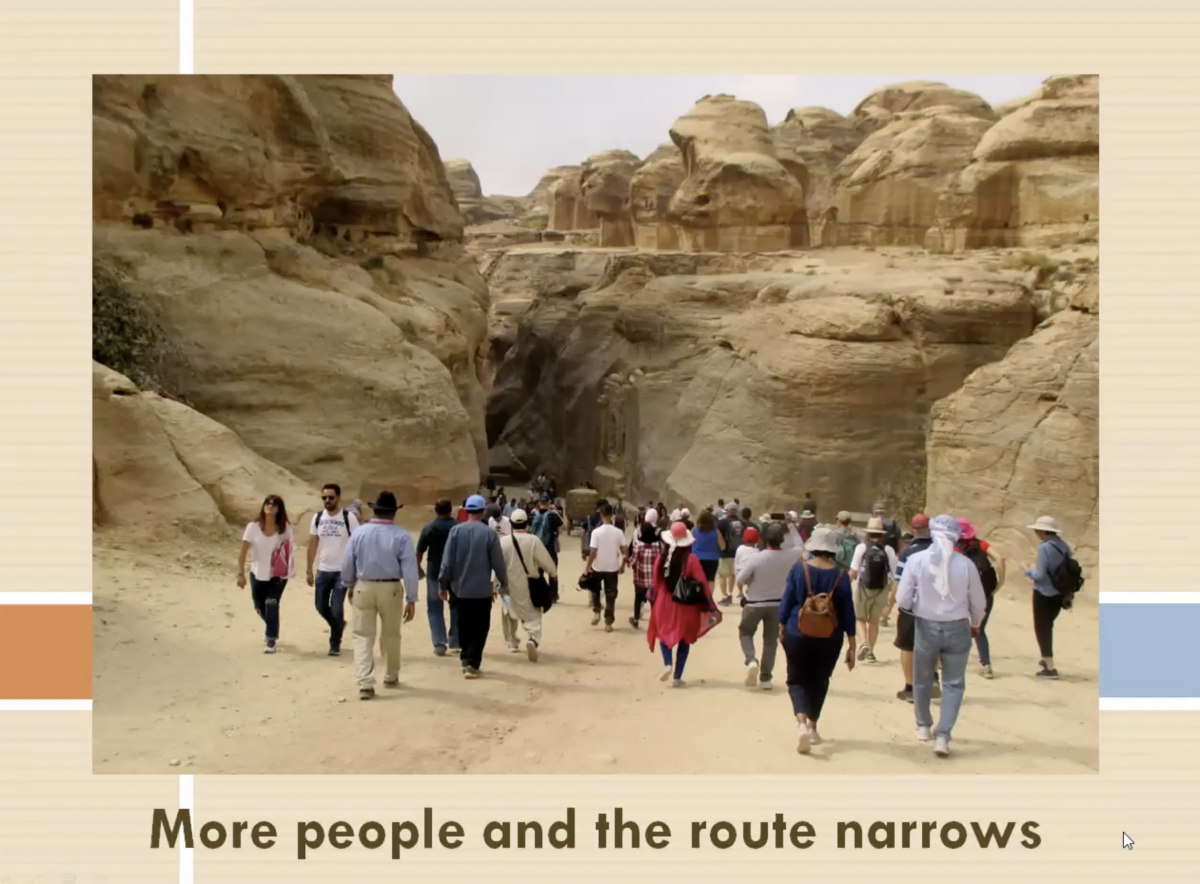
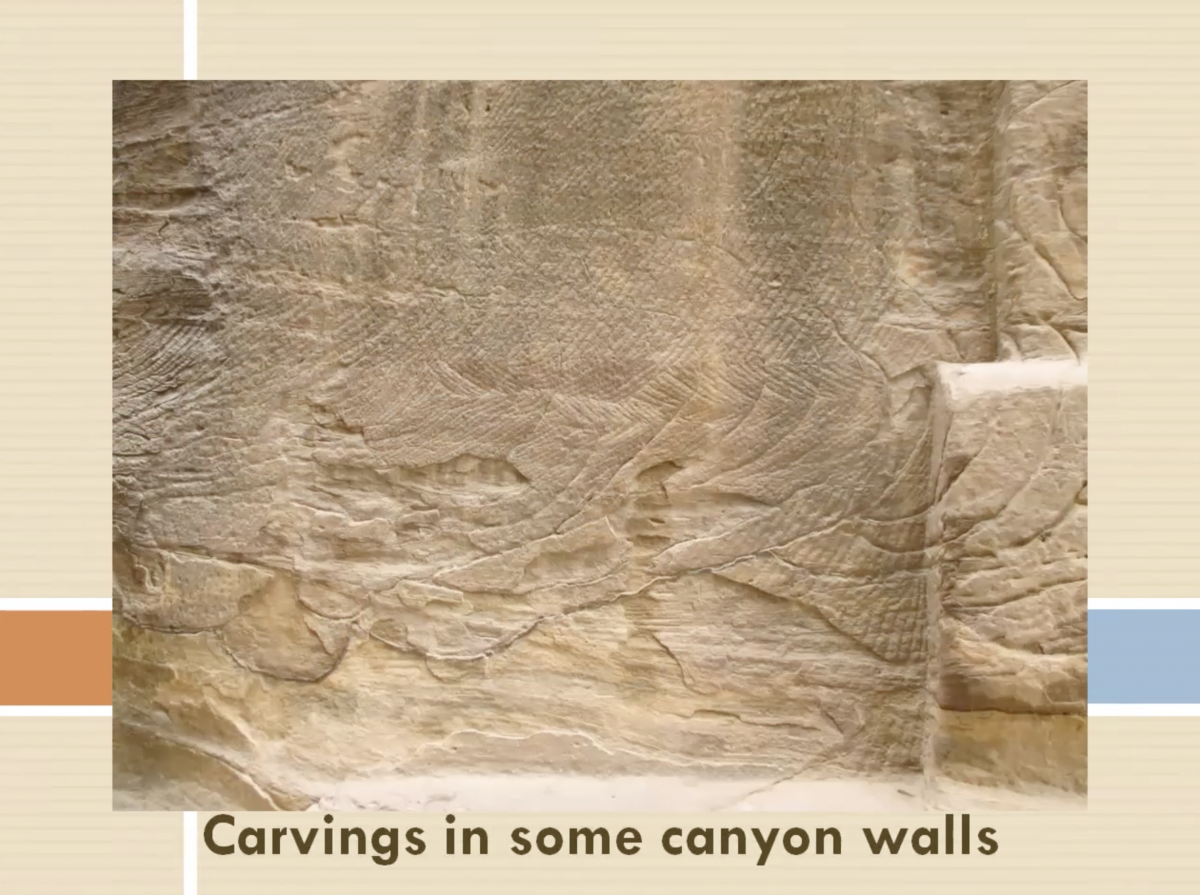
There are lots of horse carts you will see along the Siq, driven by Bedouins (the people who lived in Jordan after the Nabateans). They move quite fast, so if you see one coming, get out of the way quickly!
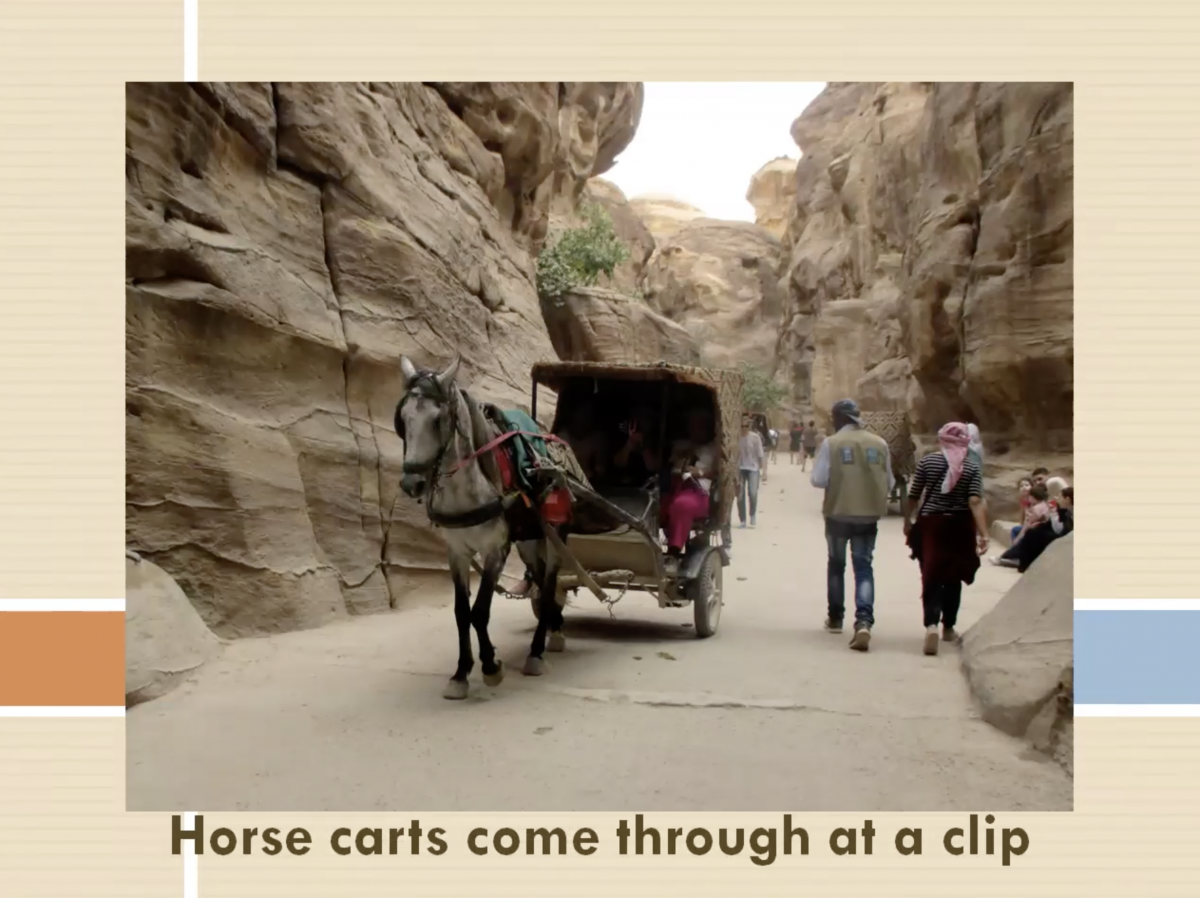
One of the fascinating aspects of Petra is their water systems (or "hydrology") established in ancient times, which were very elaborate and required advanced engineering. They used a variety of dams, cisterns, pipes and aquaducts to move water throughout the area and prevent drought as much as possible.
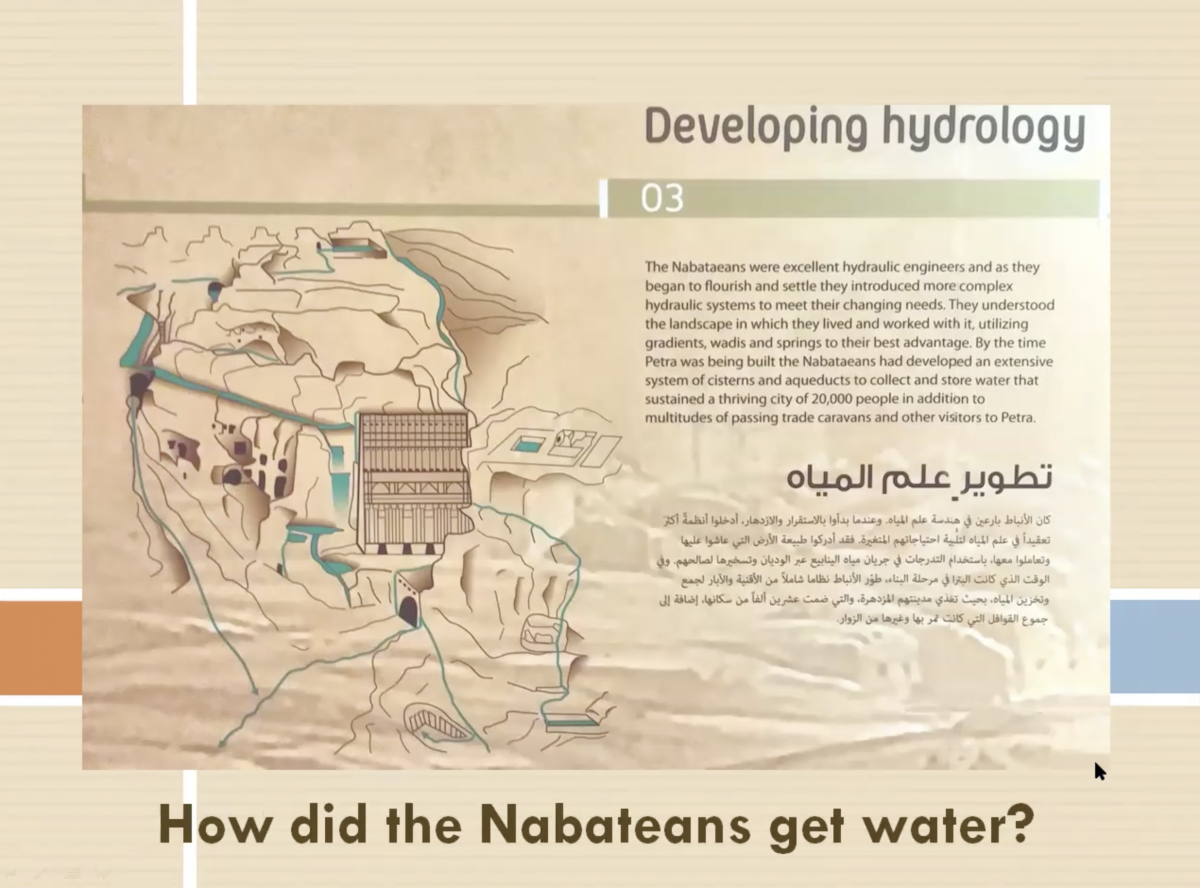
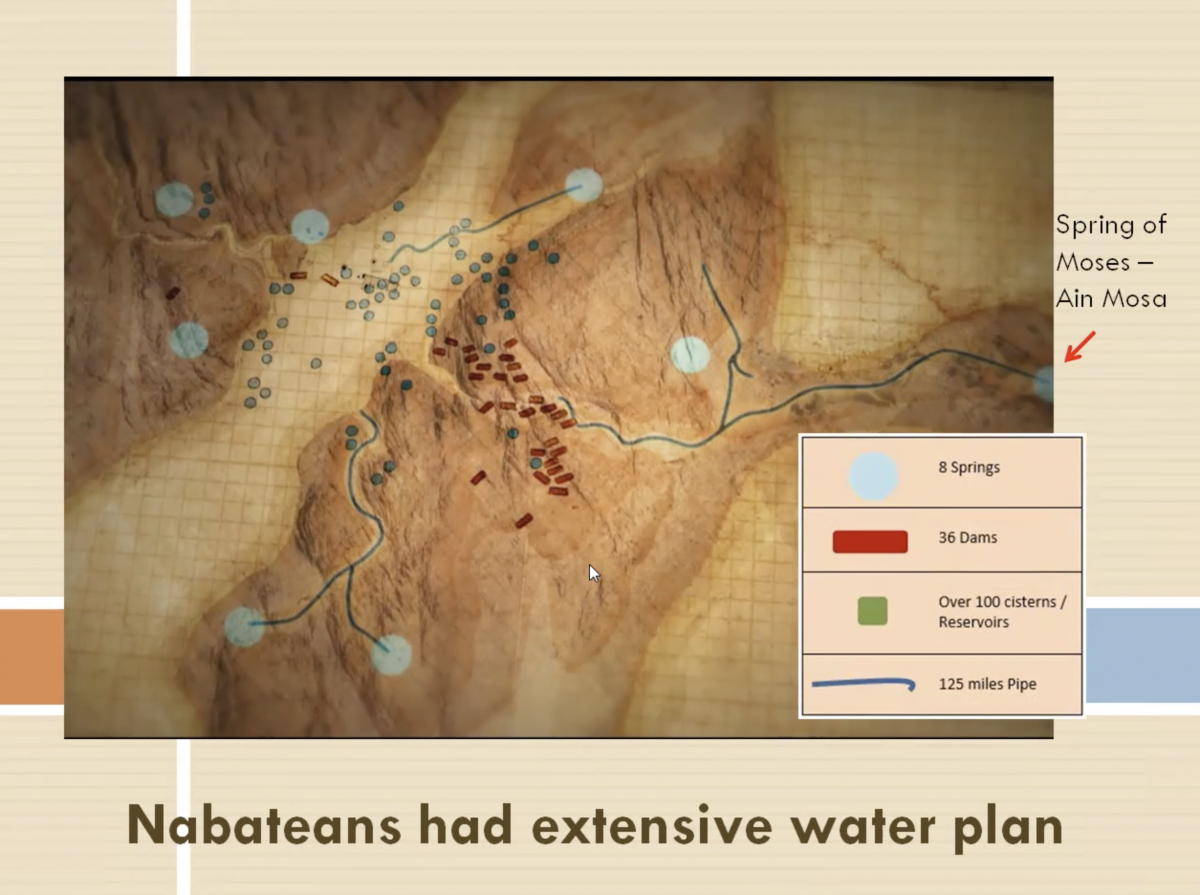
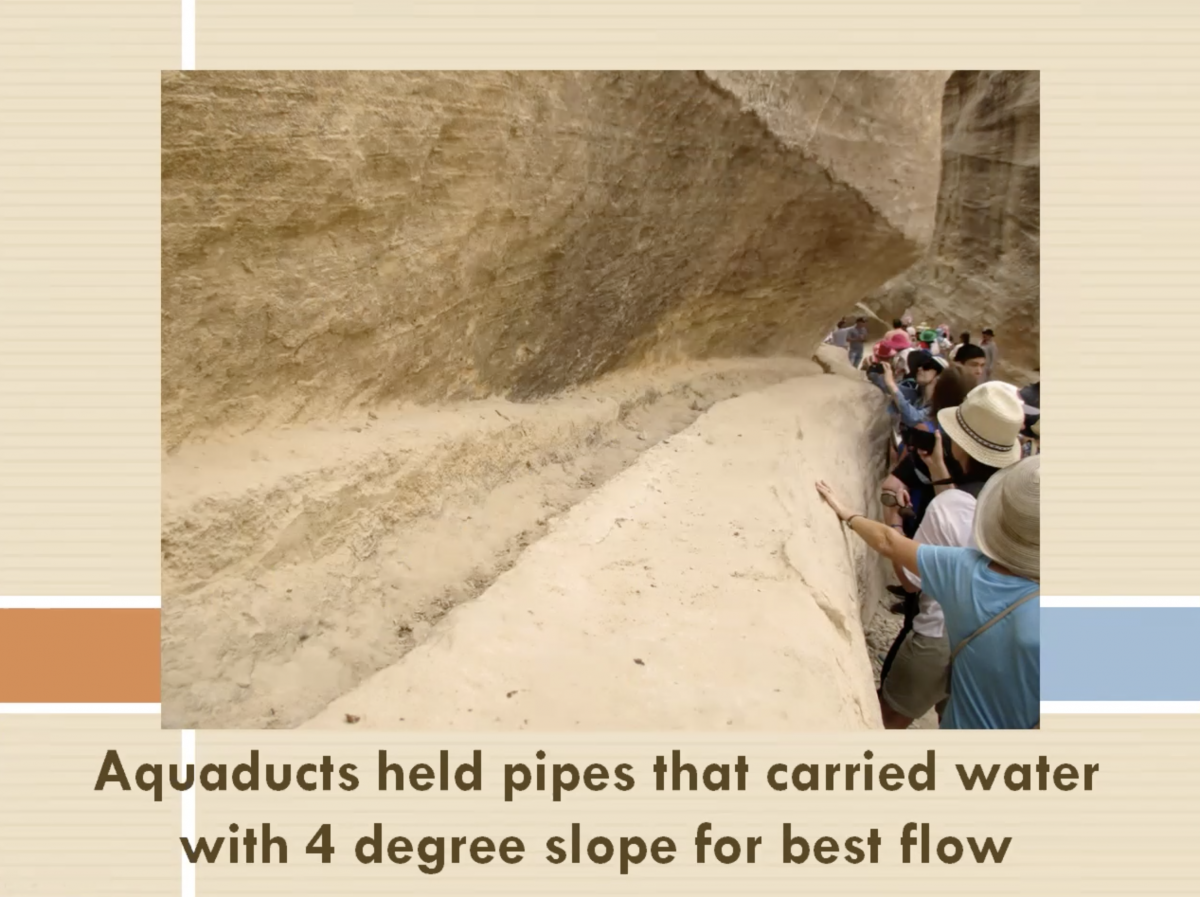
Things to See
The Treasury (which is now a tomb) is another monumental sight, with a height that is about twice as tall as the faces on Mt. Rushmore. While it is not currently open to visitors, there is plenty of room outside to take in the view. The front of the treasury is exquisitely carved, and you can see small footholds along the sides where architects could climb up as they carved from the top down.
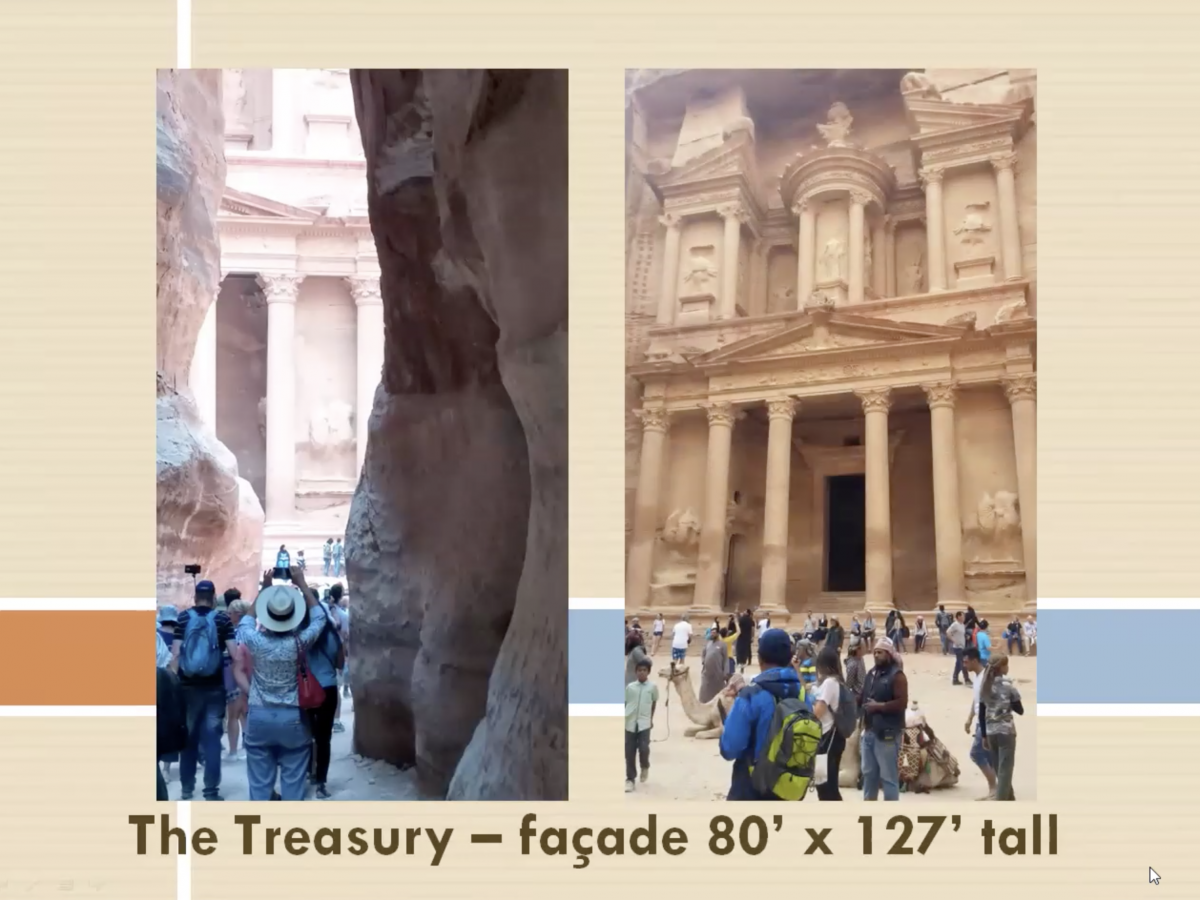
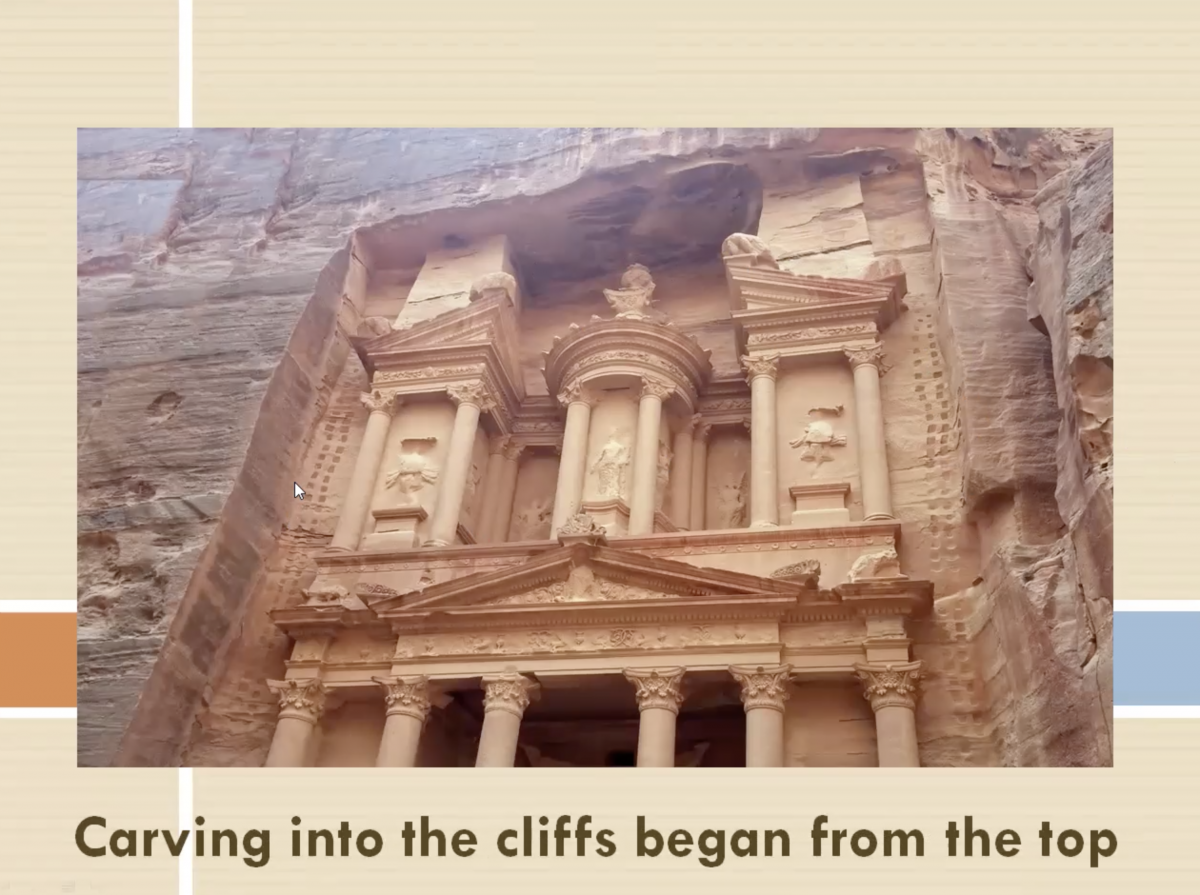
There are a variety of animals to see in Petra as well, including camels (which you can ride), donkeys, and goats.
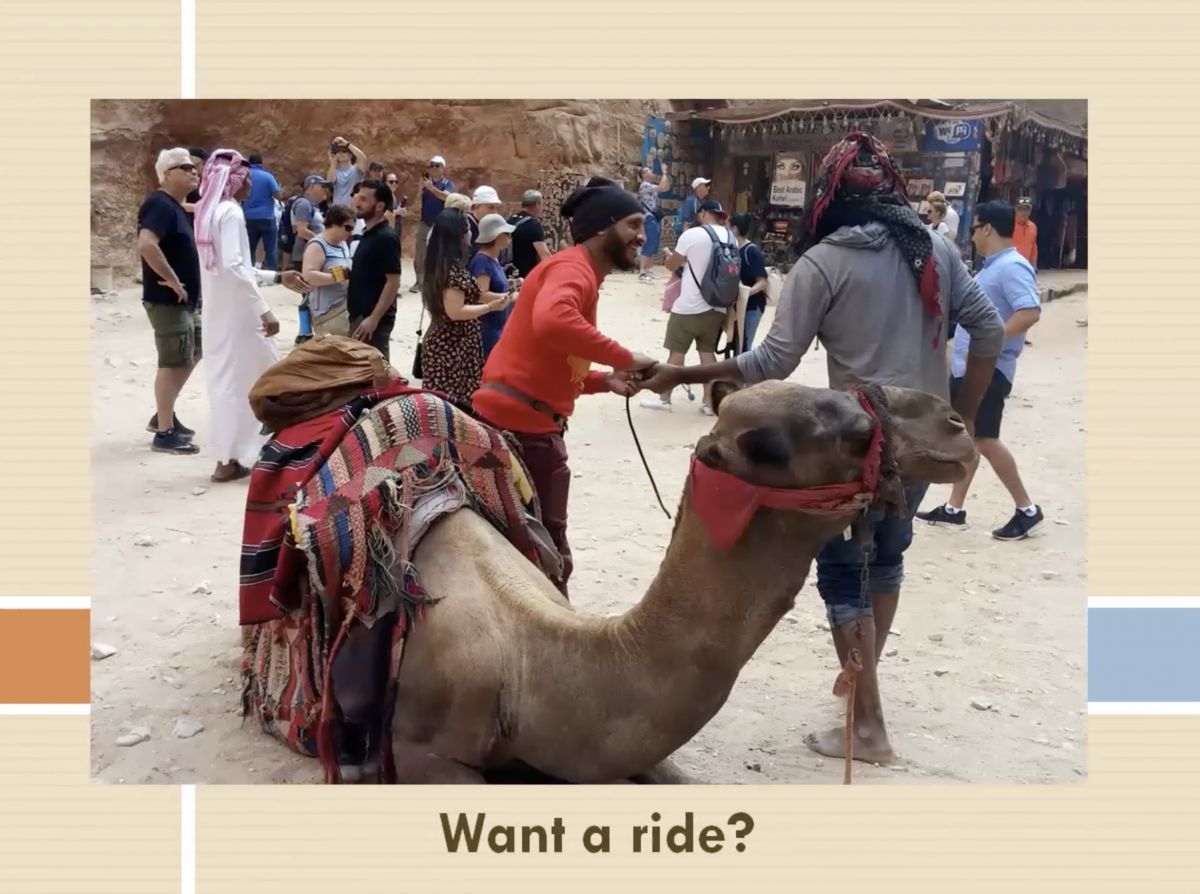
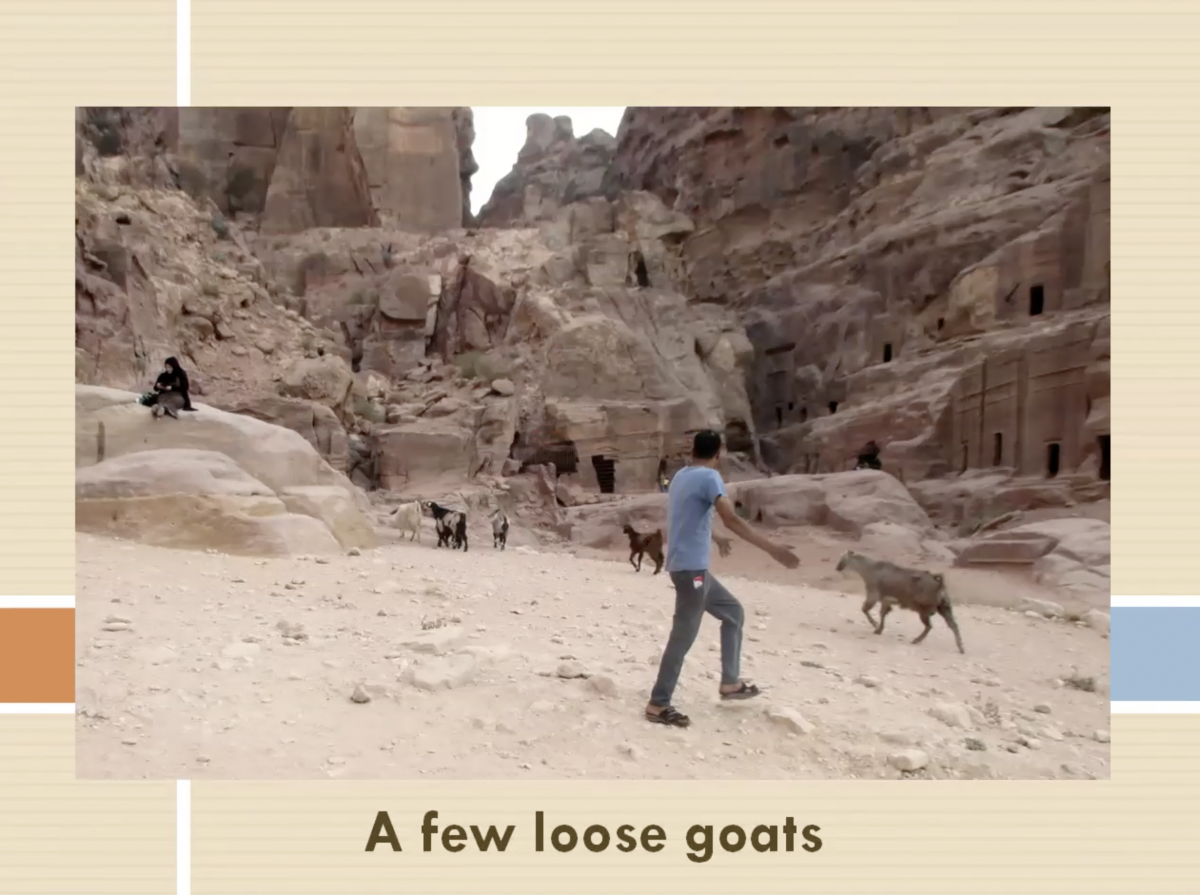
Additionally, you will find some gift shops selling local creations. Mary's favorite items were sand "paintings" made by artfully pouring sand into glass bottles - amazing!
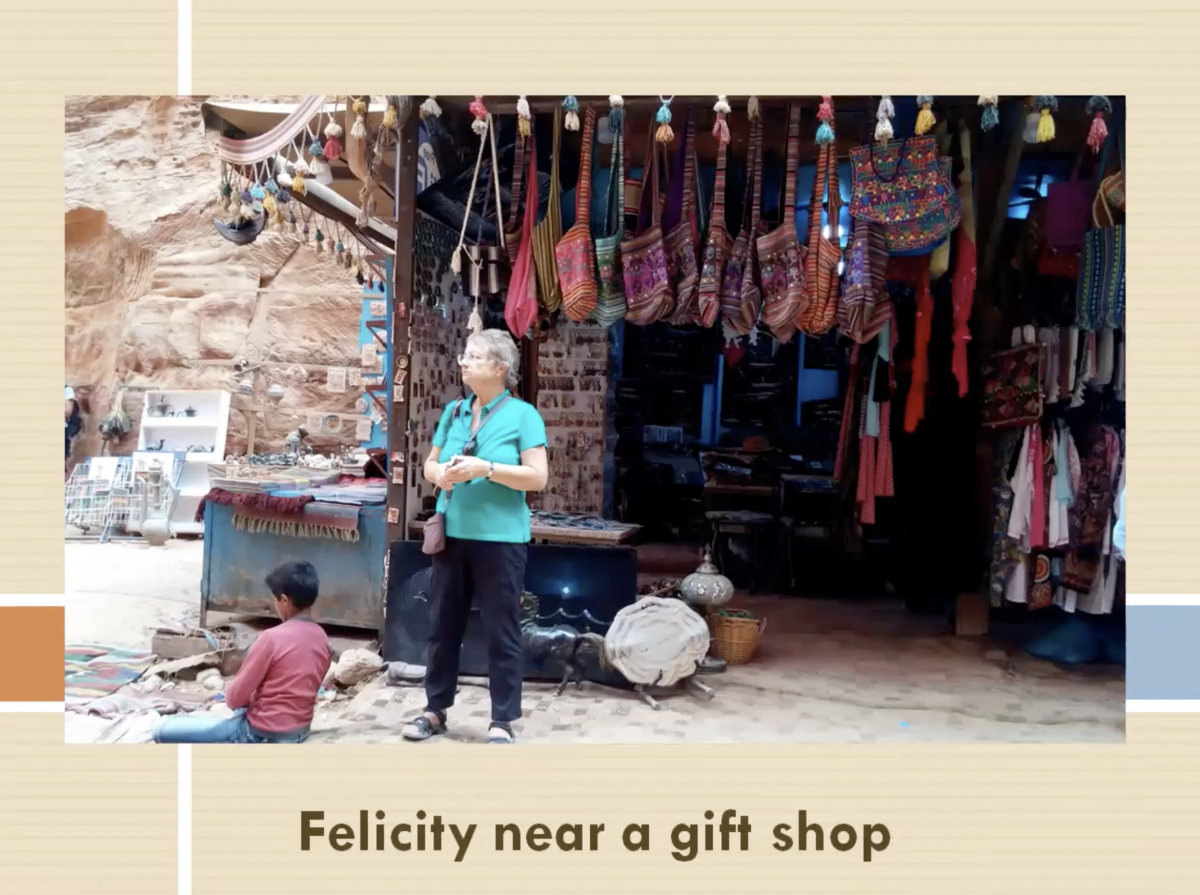
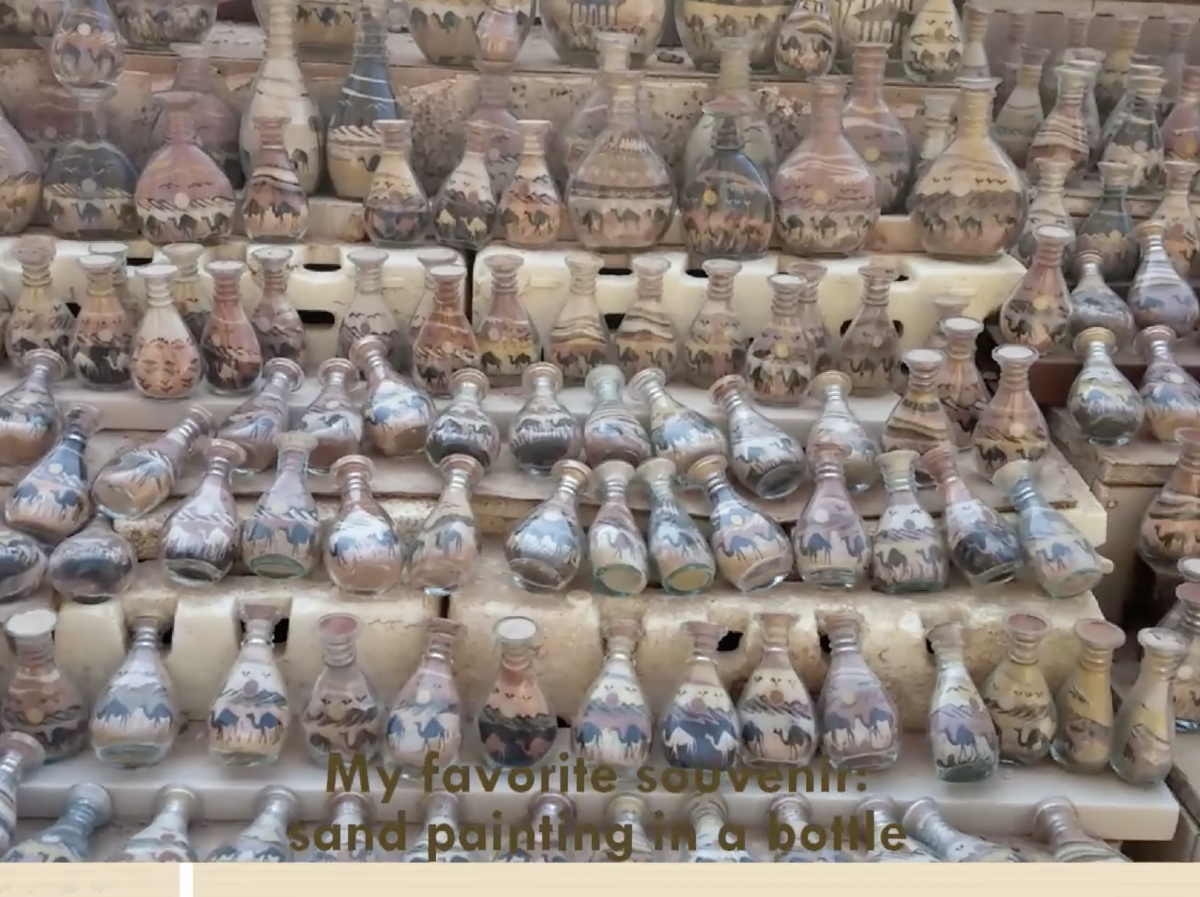
Many royal tombs are also located in Petra, along with other forms of architecture developed by the Nabateans. Their architectural style was very eclectic, and combined various styles from different cultures. Their theater has a very Roman style.
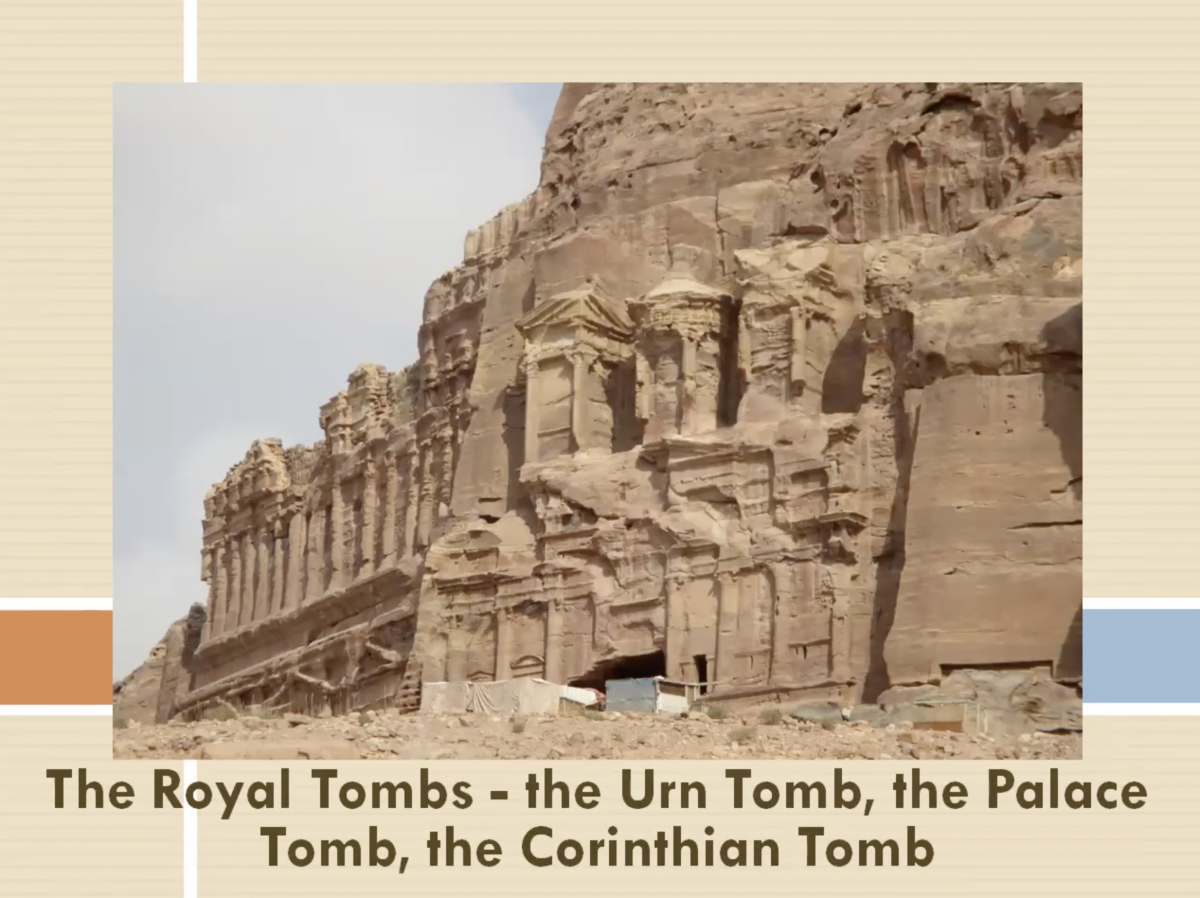
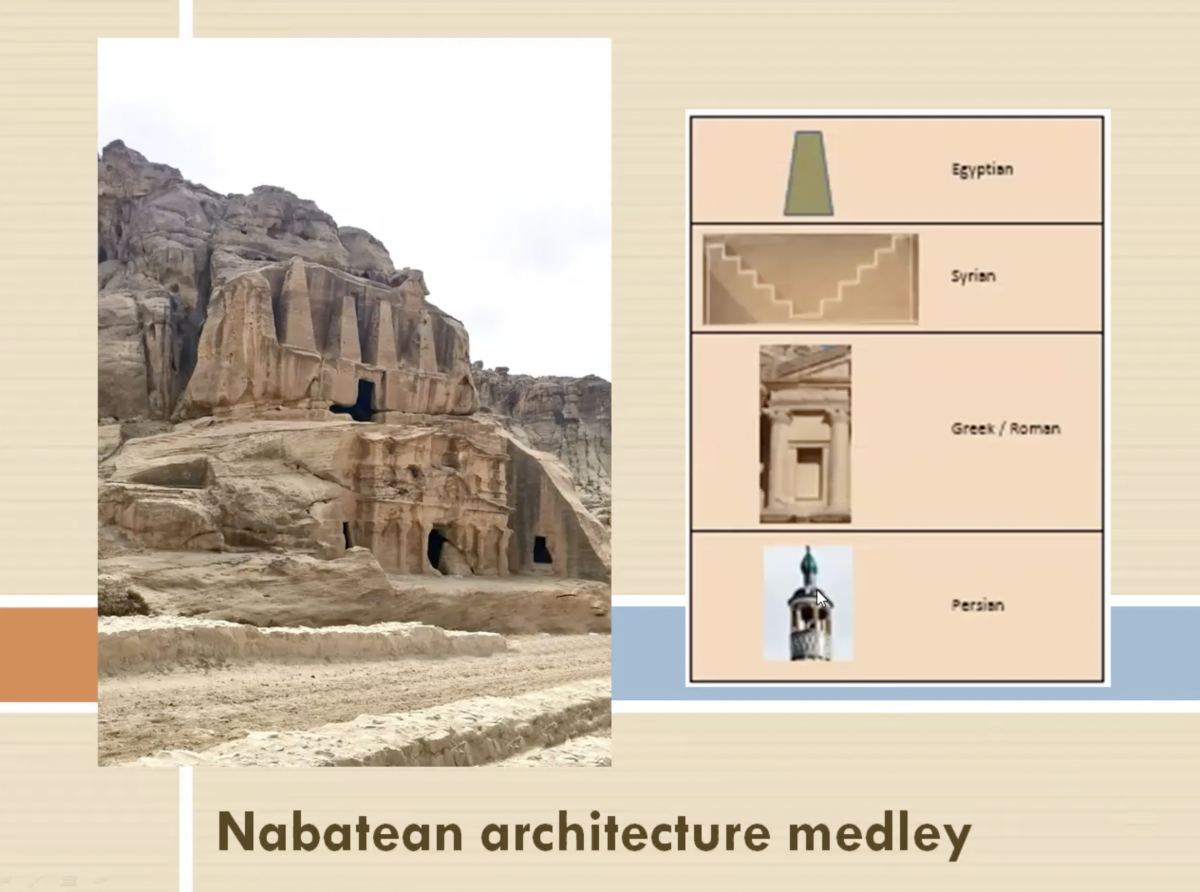
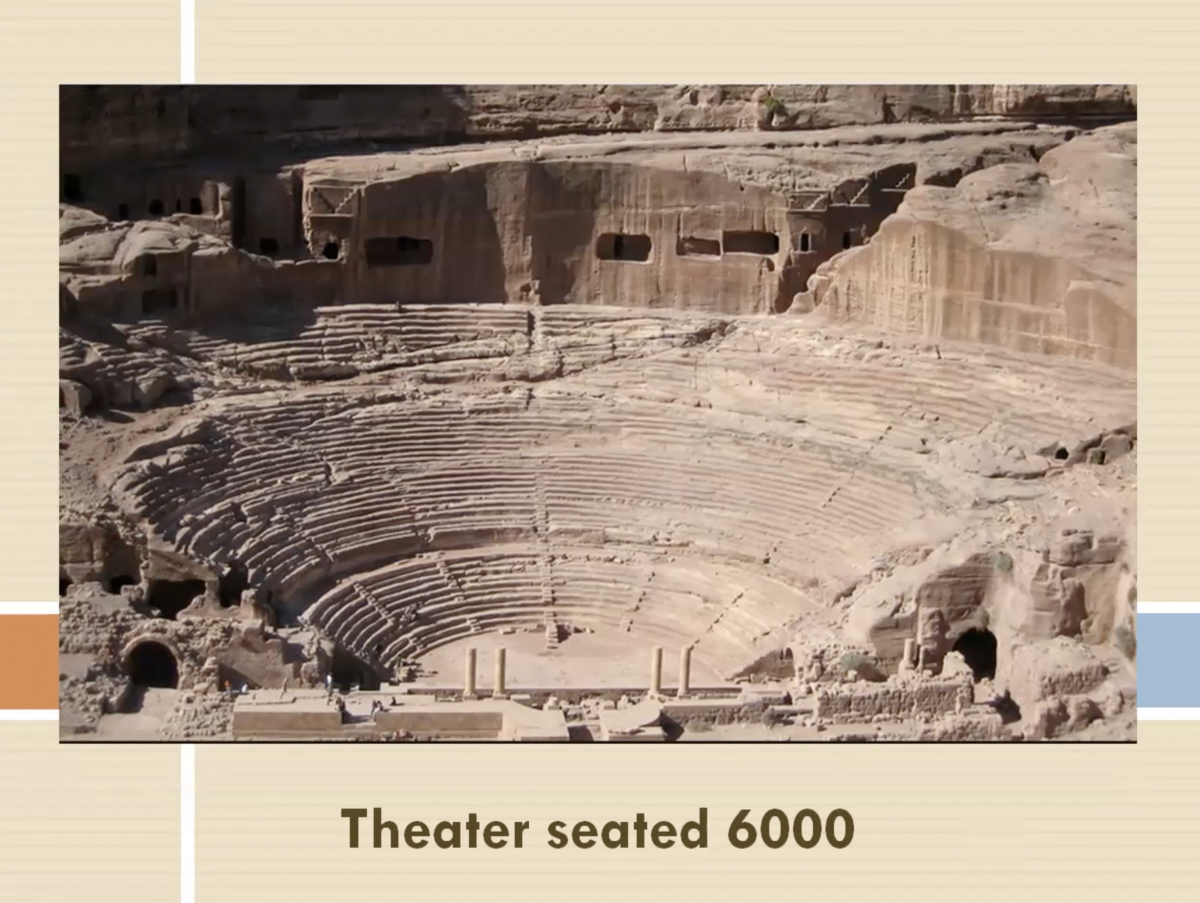
The Monestary is another beautifully constructed tomb which requires a donkey ride and the ascension of 800 stairs to climb up to it. You can see the influences of Roman and Greek architecture in this edifice.
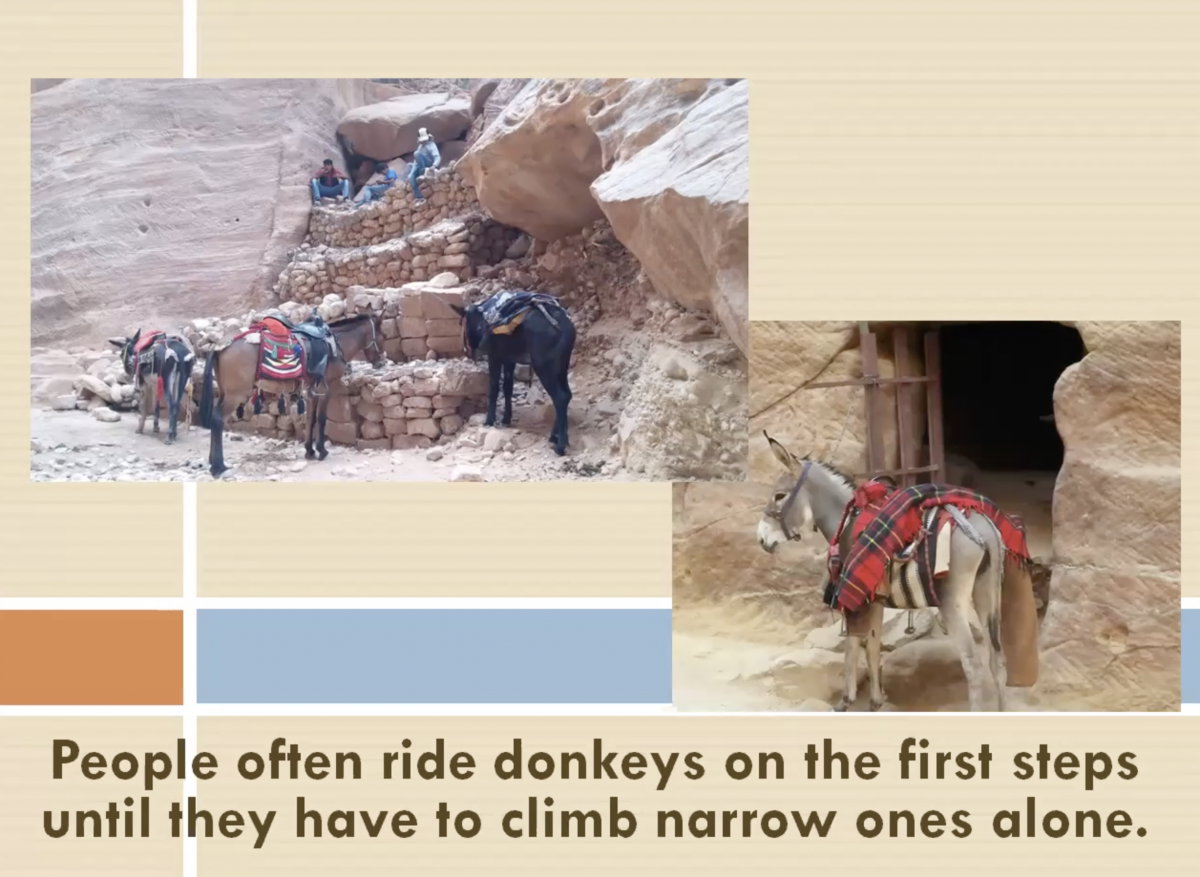
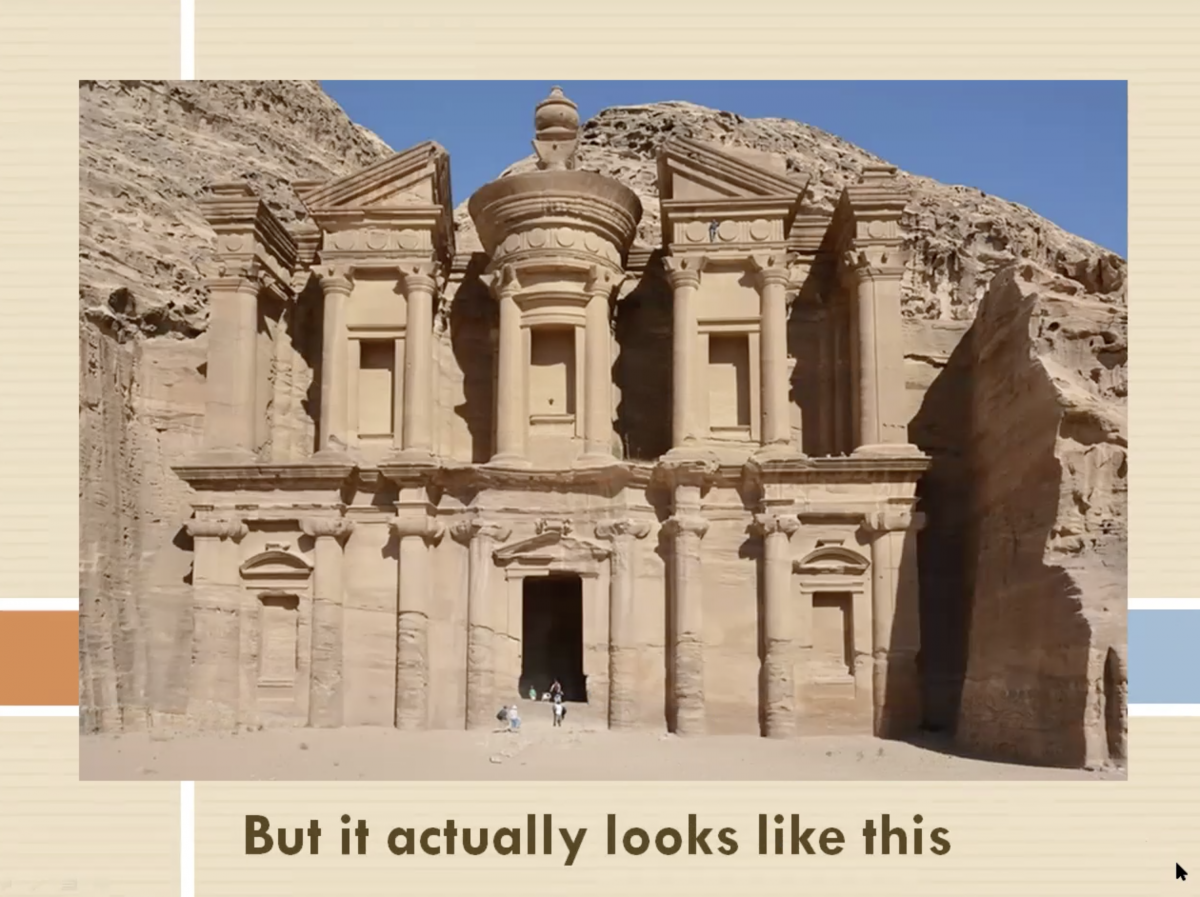
The Great Temple is a massive temple built during the Roman occupation of Petra, which was a sign of great wealth in that time period. The Romans built a lot of buildings and marketplaces in the city before earthquakes and flash flooding destroyed it.
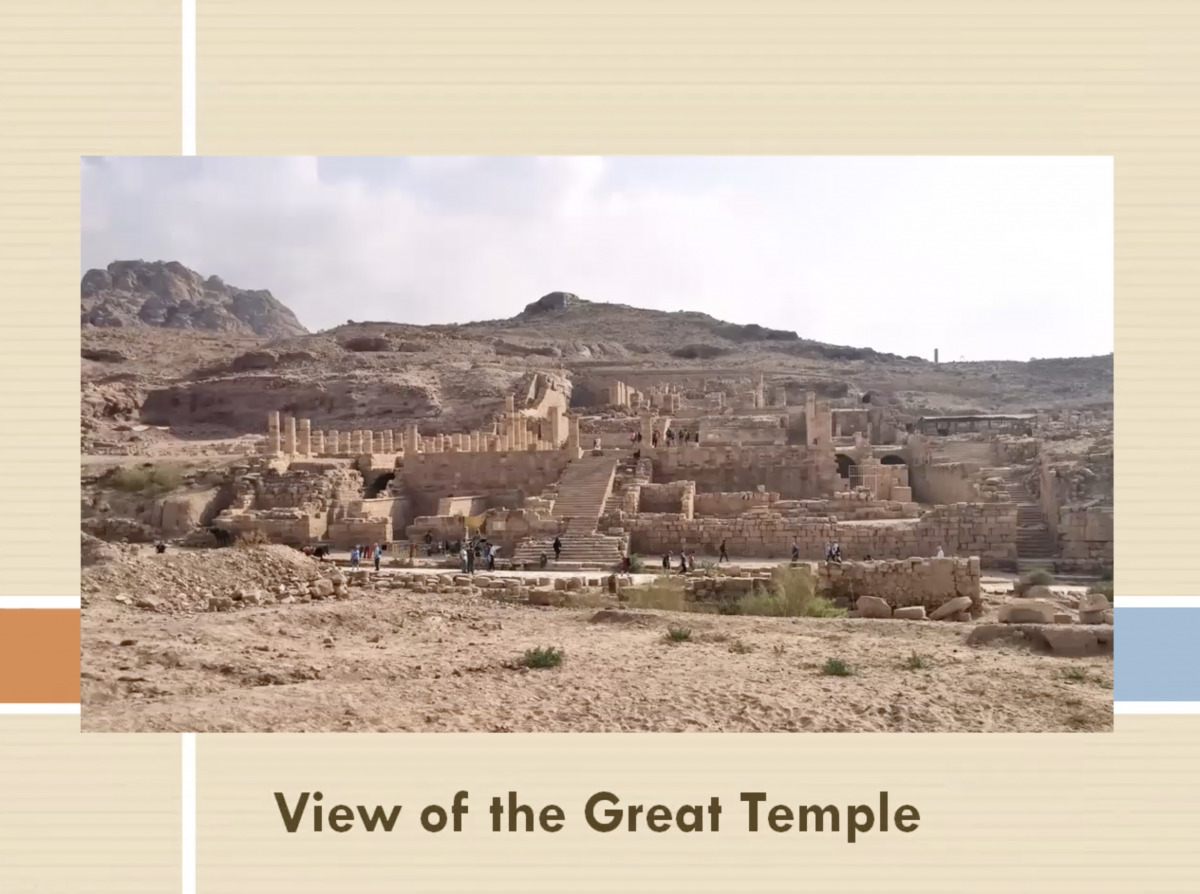
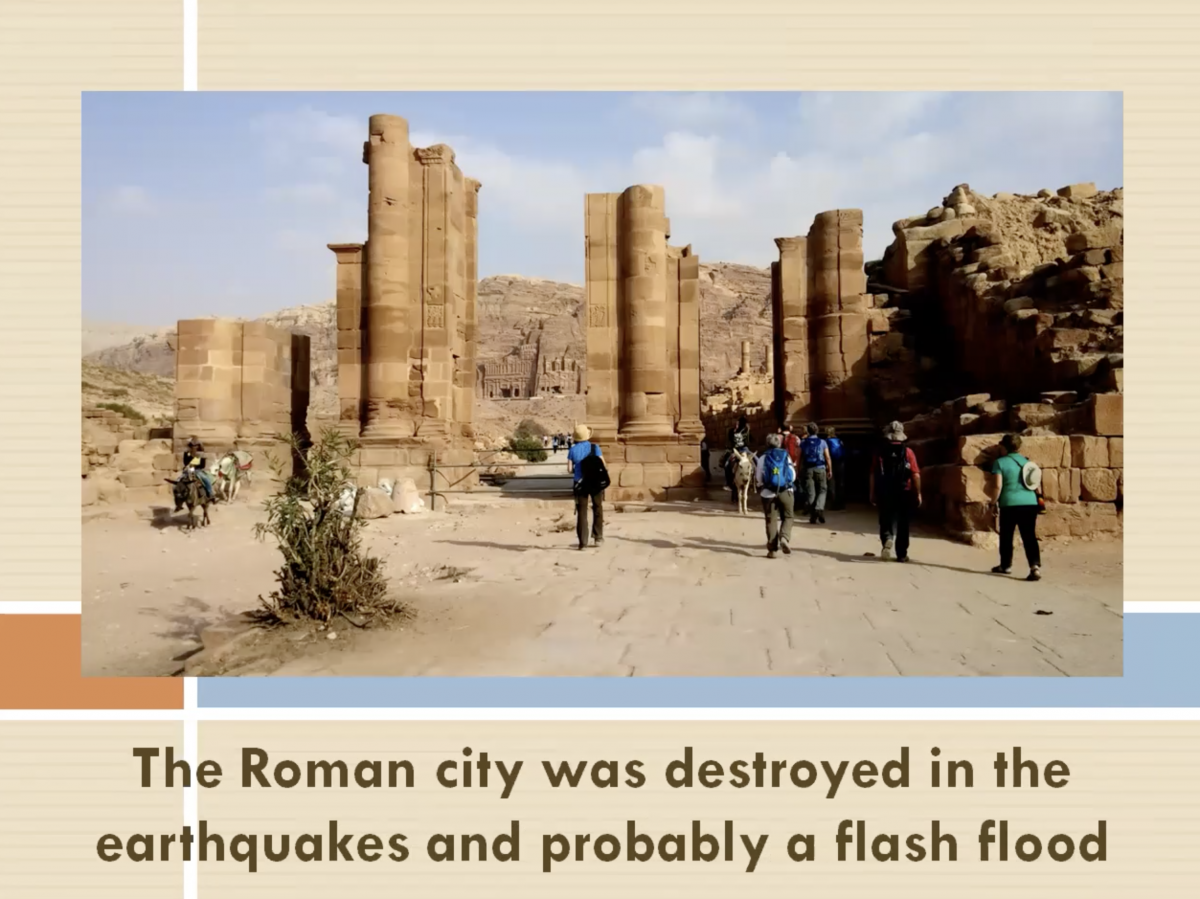
Additional History
In 363 CE, Petra suffered a major earthquake which destroyed half the city, including a large portion of their water systems. As a result, the city was largely abandoned until a Swiss explorer named Johann Ludwig "rediscovered" the city in 1812 CE. After that, it was opened more largely to the public.
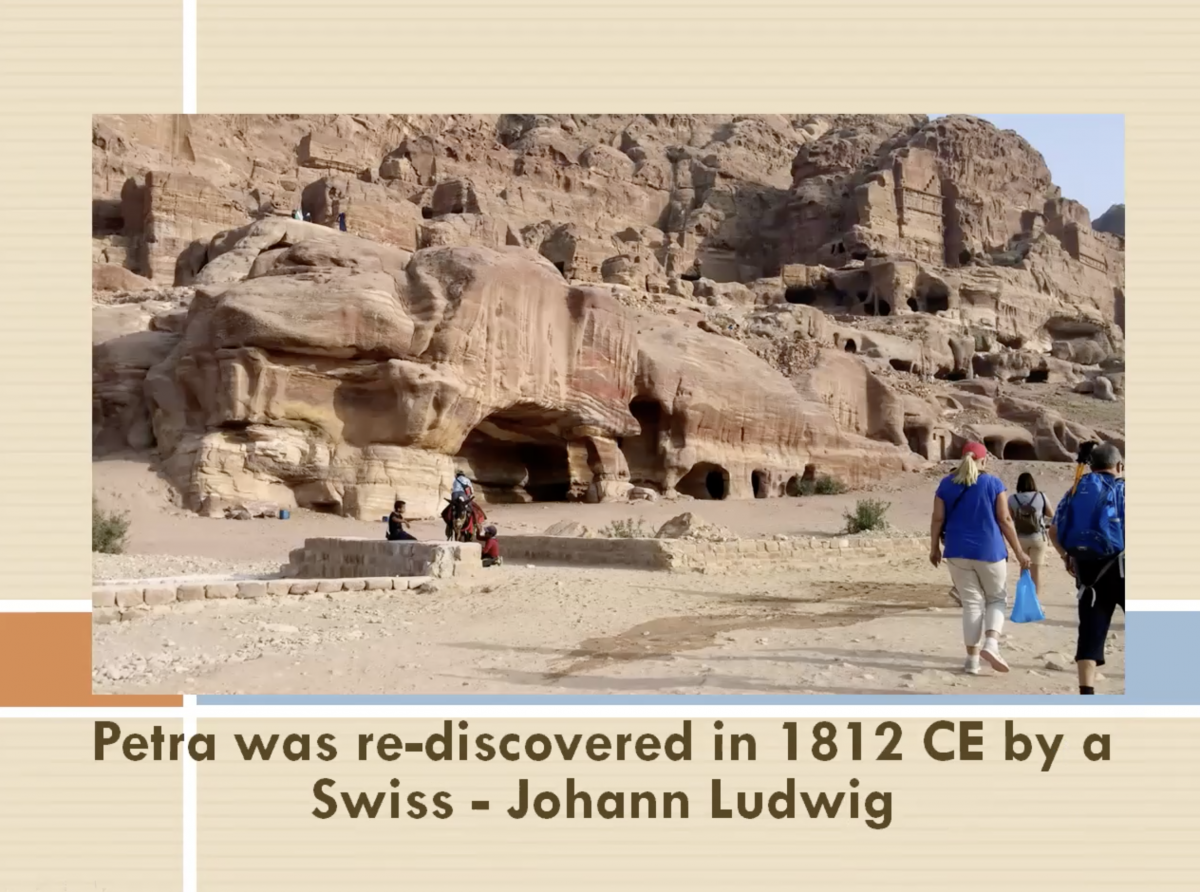
The living areas in Petra were occupied by the Bedouins, until the area became a UNESCO site in 1985. At that point, the Bedouins were asked to leave and any improvements they had made to the ancient housing systems were removed in an attempt to preserve their original state. The Bedouins were relocated to a nearby village and given exclusive rights to the tourist trade in Petra, which they still run.
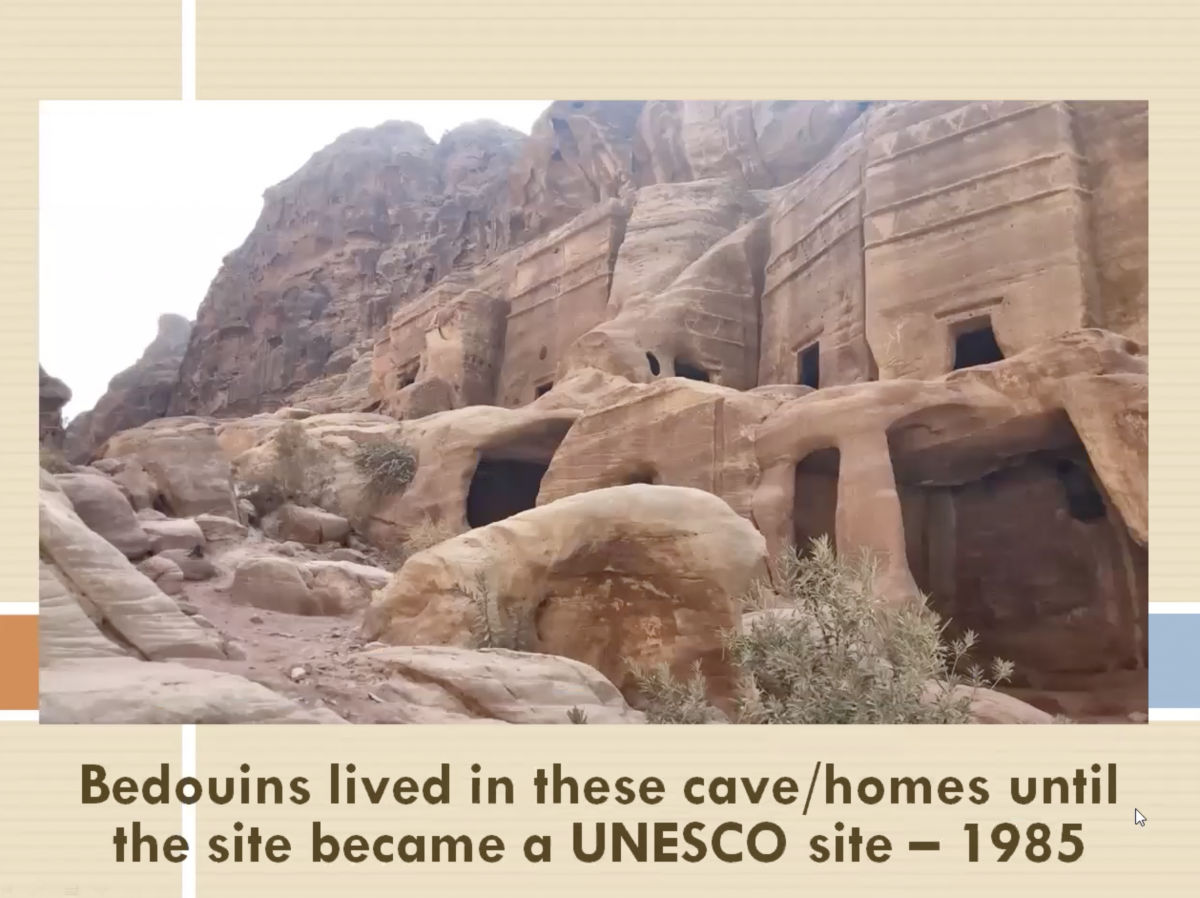
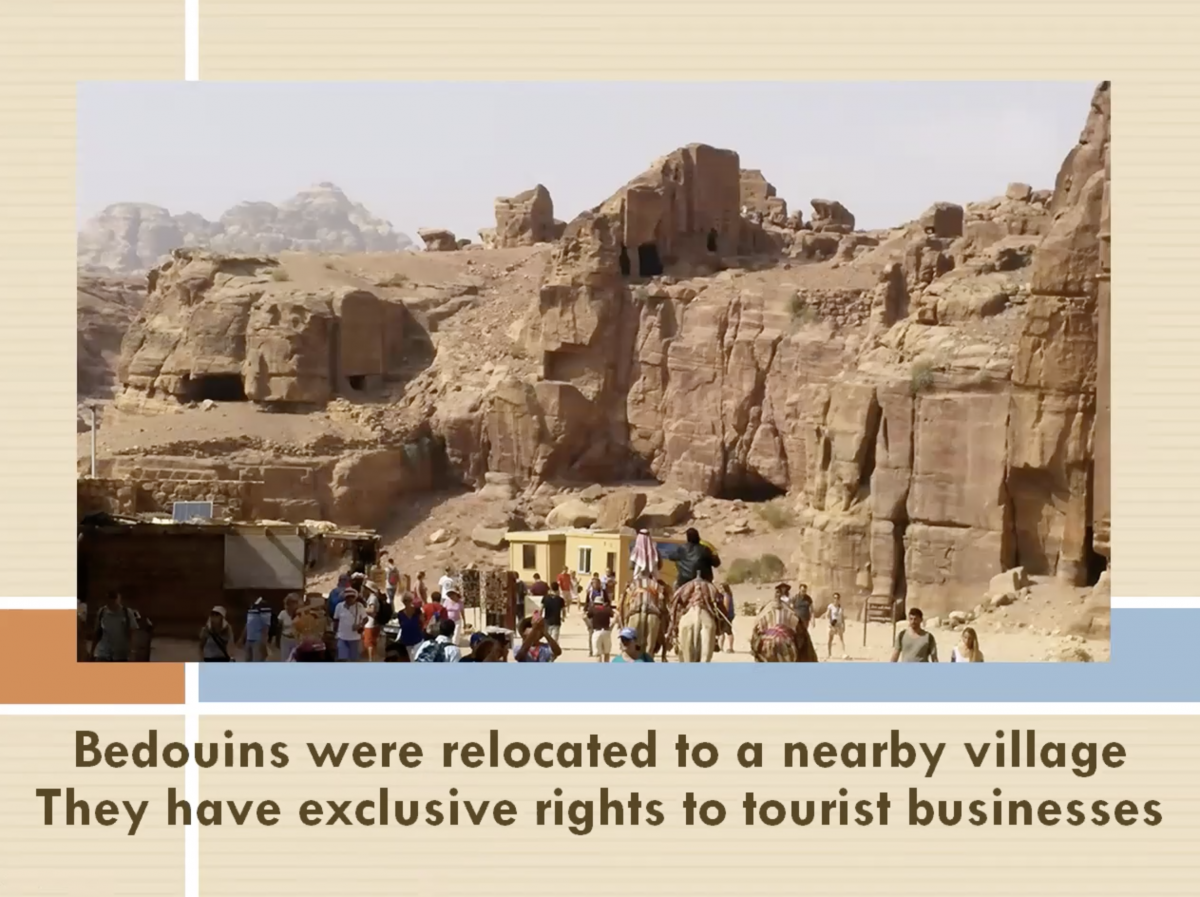
Present-day Petra is still home to a variety of living areas and shops, and brings in a lot of tourists during the year.
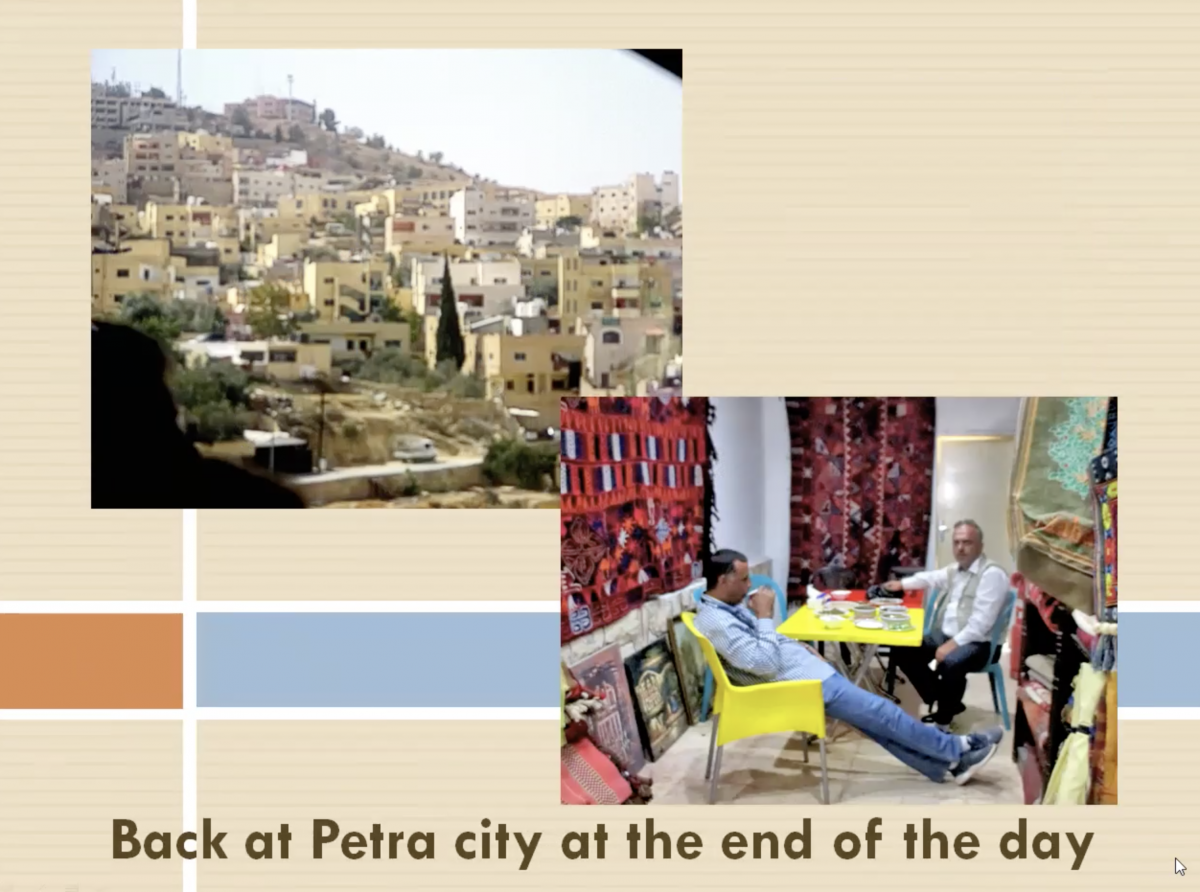
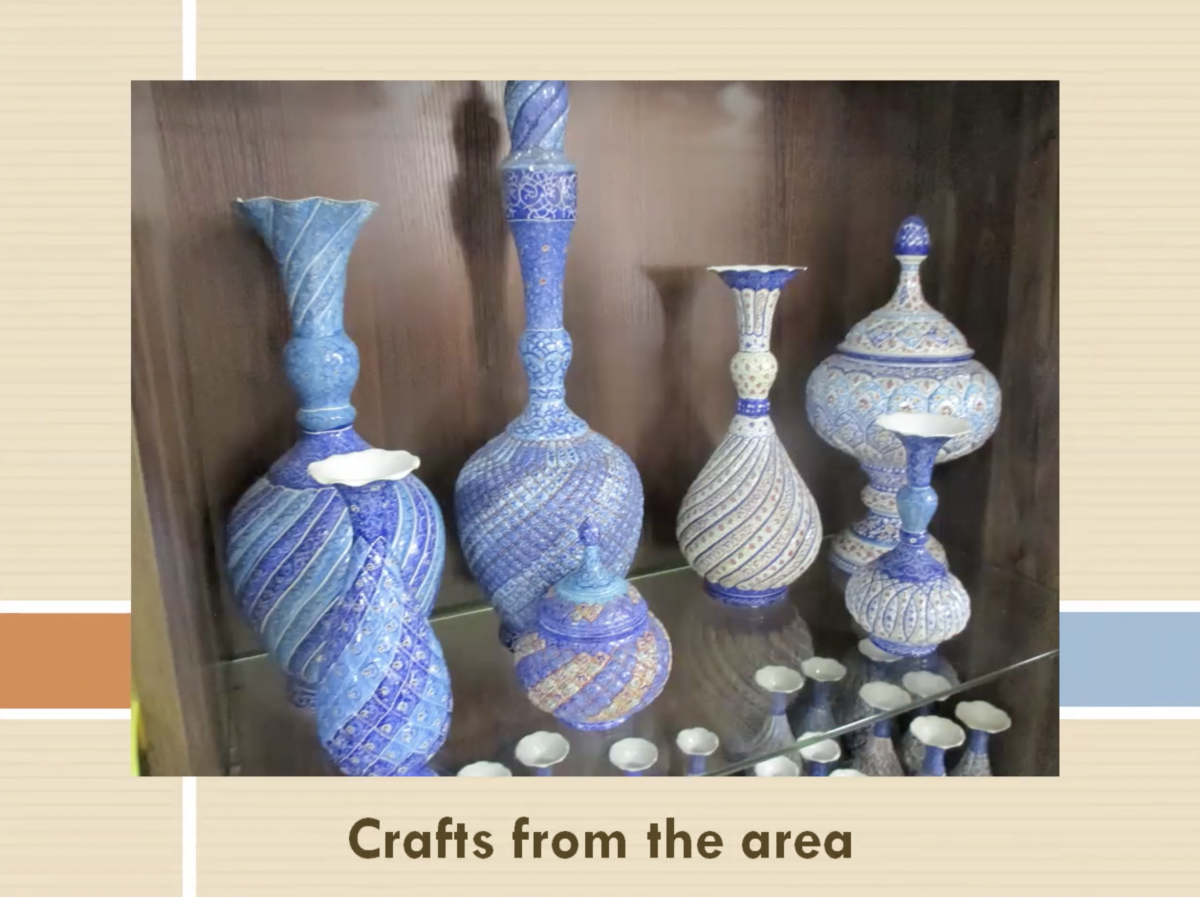
Wadi Rum, Jordan
The second city Mary and Felicity stopped in was Wadi Rum, just south of Petra. Their travel guide, Mohammed, went with them into the desert where they rode jeeps to view the incredible rock formations. There is very little vegetation, and the vast sandy landscape almost looks like another planet!
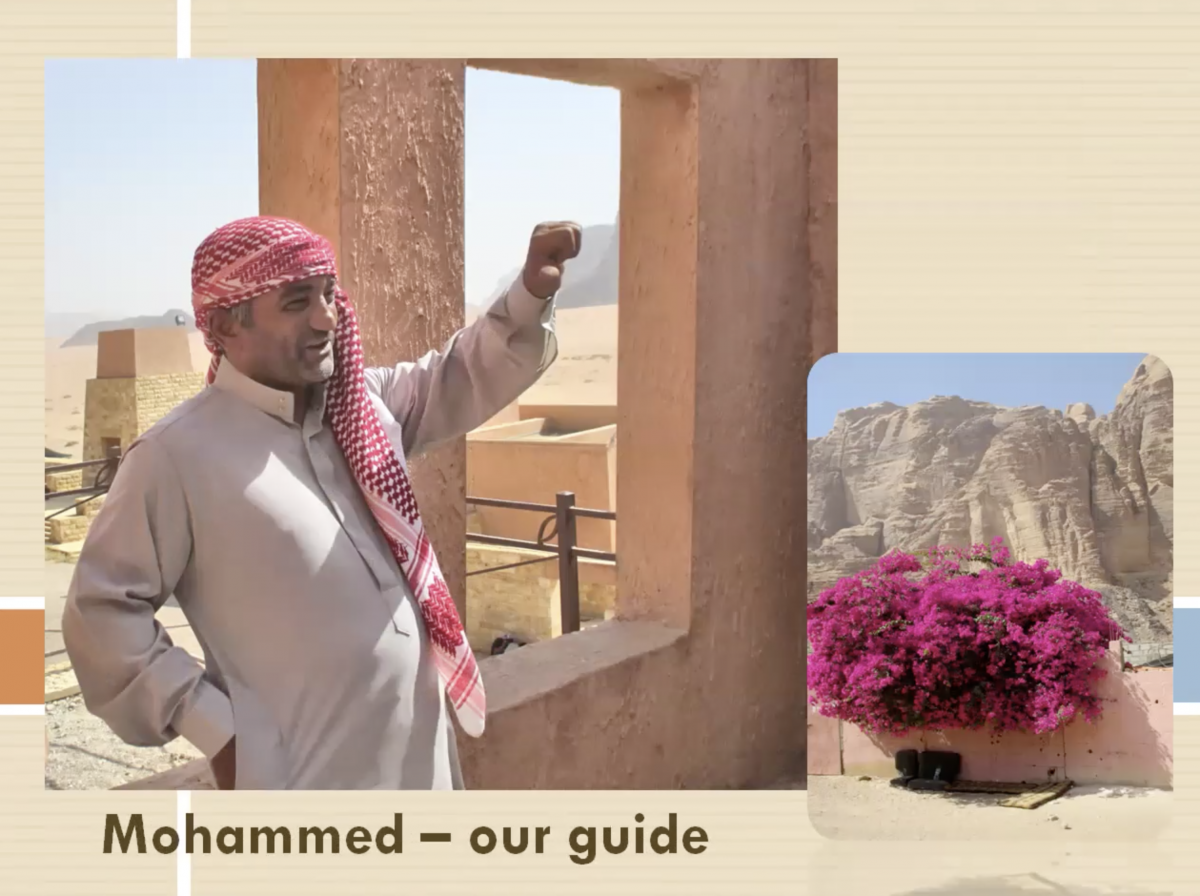
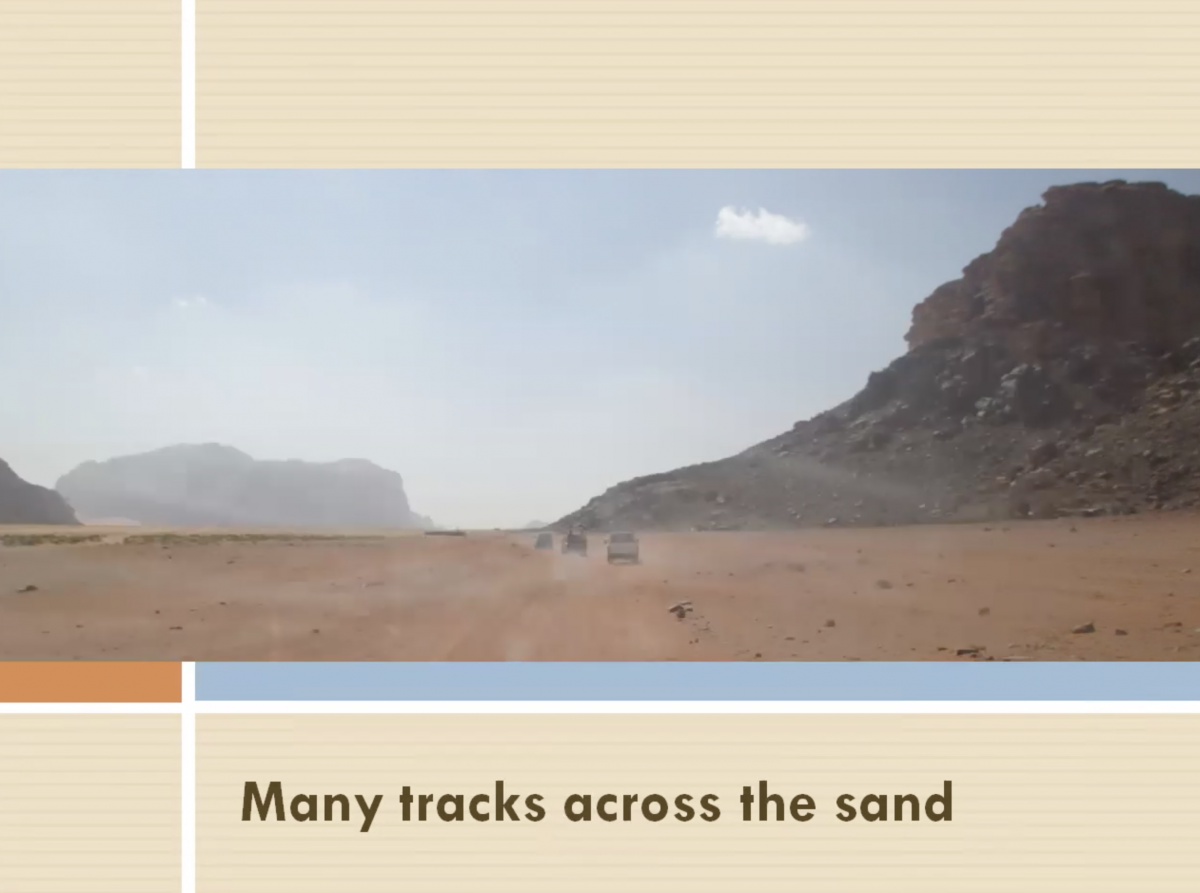
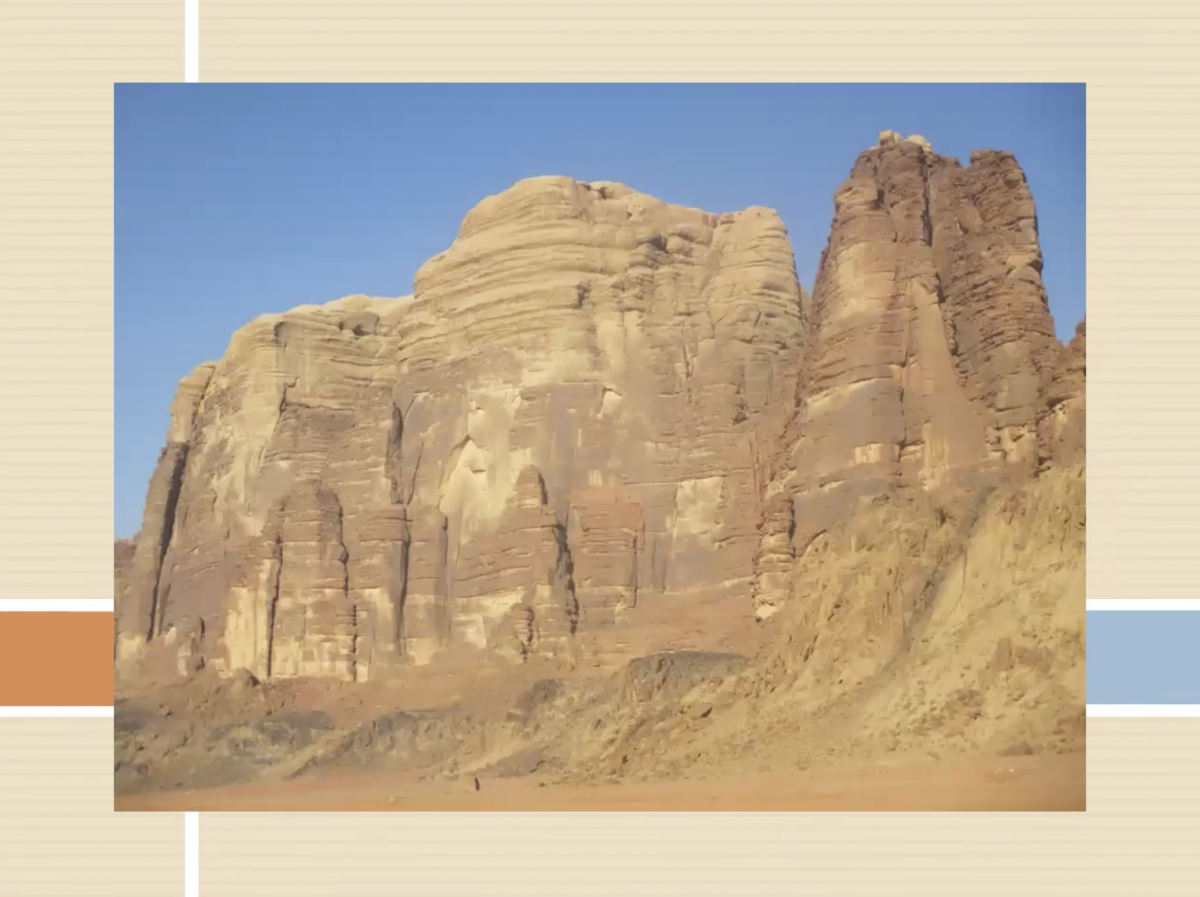
Various movies have been filmed in this area, including The Martian (2015), Raiders of the Lost Ark (1981), and Lawrence of Arabia (1962).
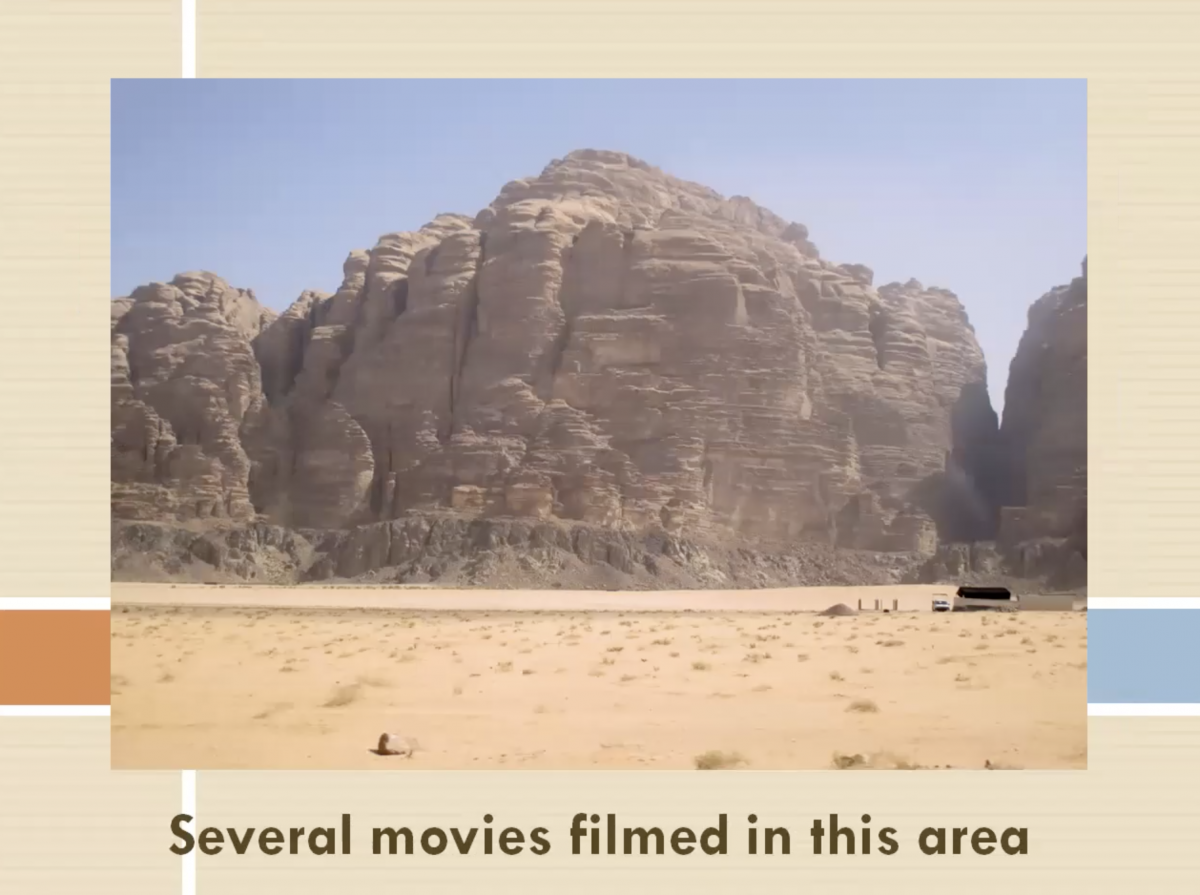
After riding for a bit, they stopped for a desert picnic lunch, which Mohammed cooked for them over a small fire. It looks delicious!
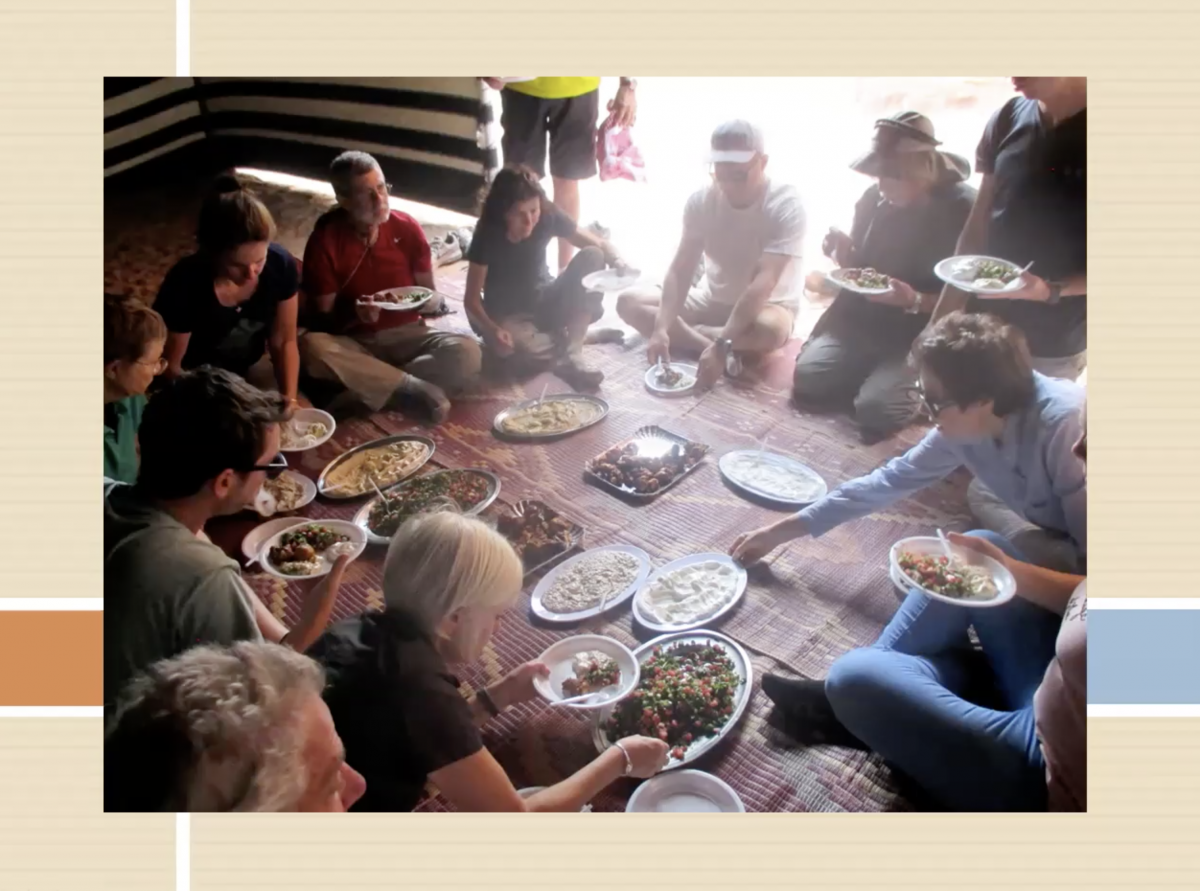
Following their lunch, they hiked to Kaz Ali Canyon. There was no pathway through the canyon, so the hike involved climing over rocks - a bit of work, but well worth it for the gorgeous view.
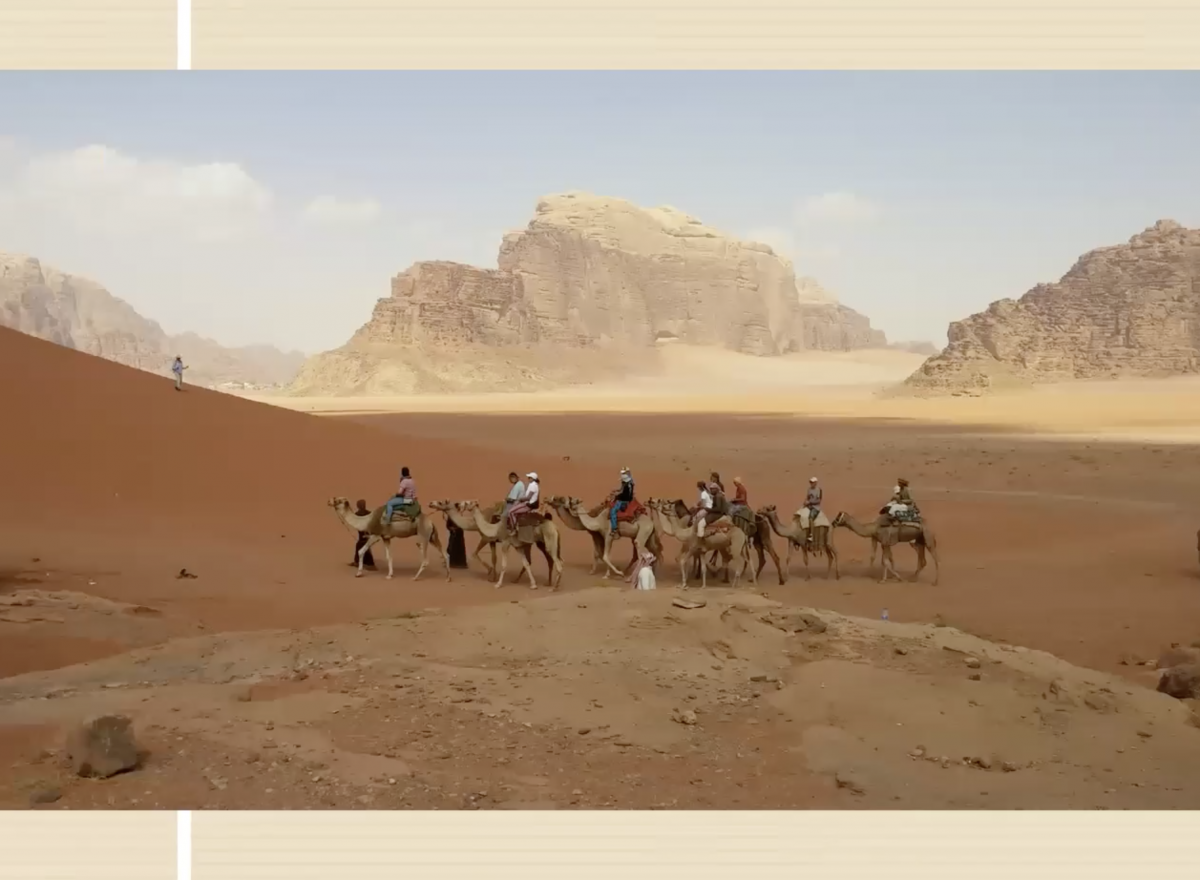
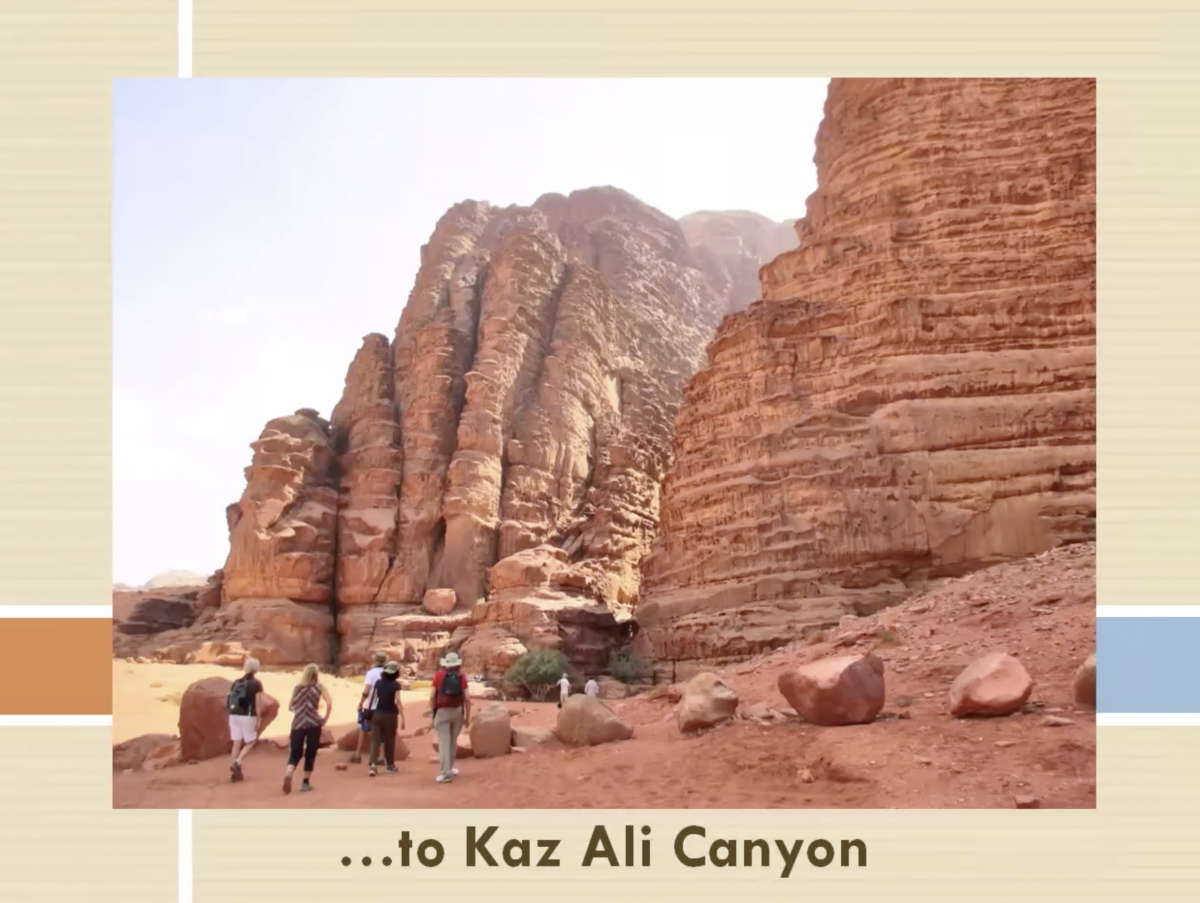
You can stay in desert tents overnight if you wish - Mary and Felicity stayed in another hotel closer to town.
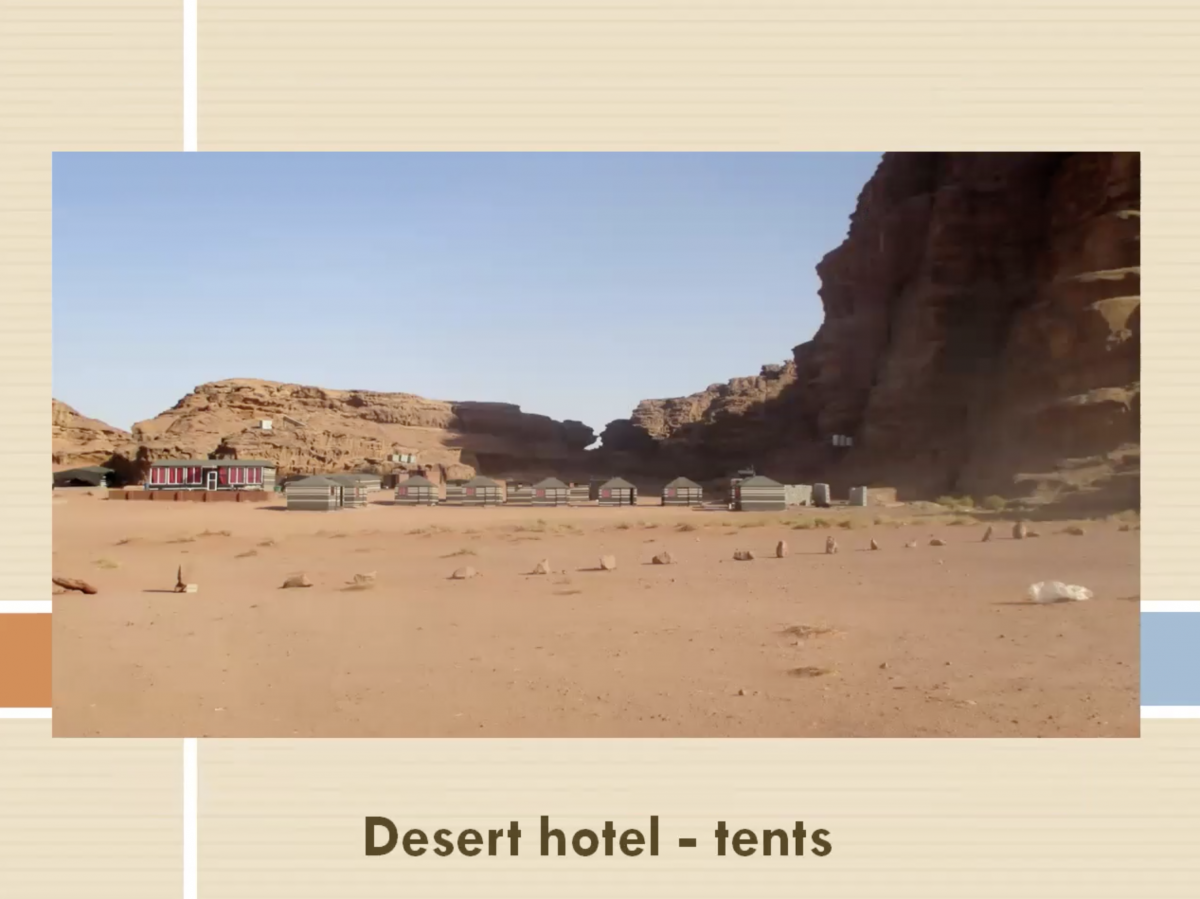
Gift shops can also be found in Wadi Rum, where you can purchase beautifully crafted rugs among other things.
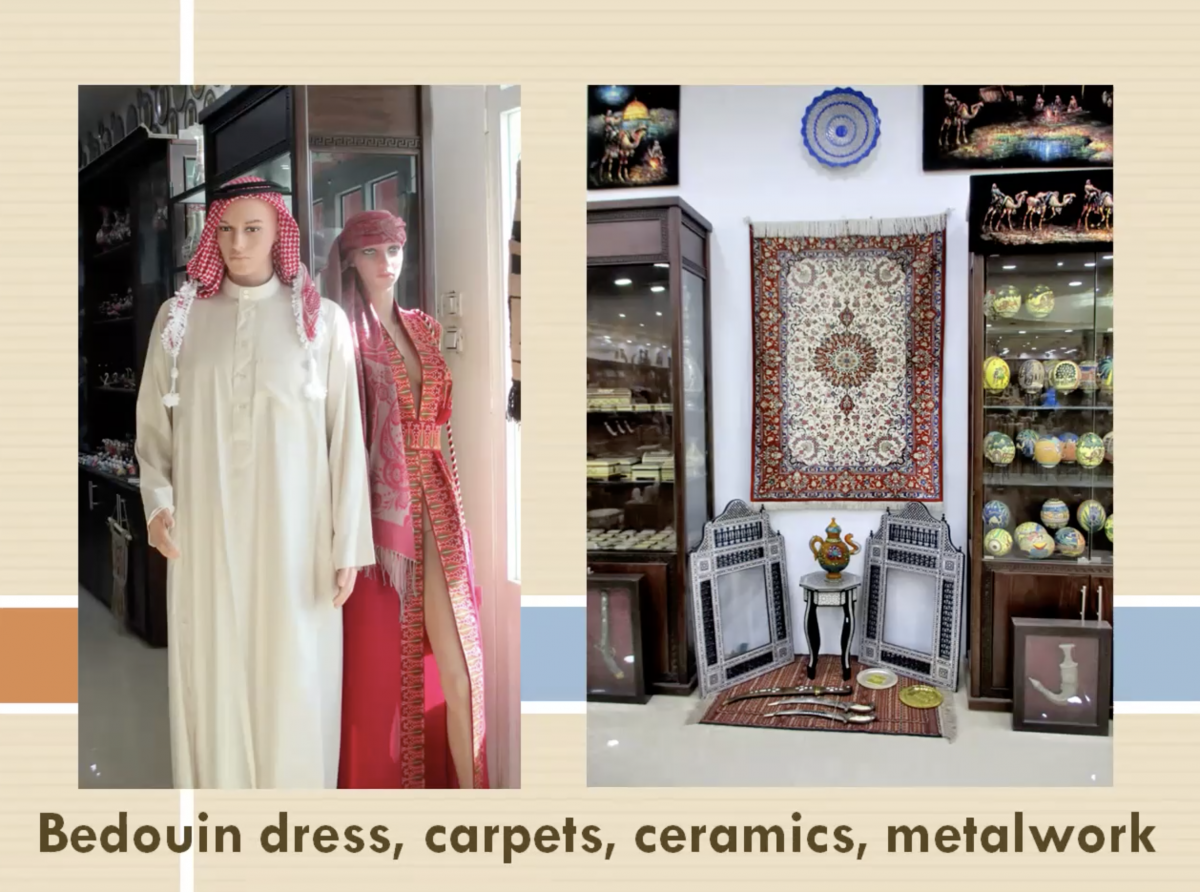
Baha'i Gardens, Haifa, Israel
Haifa, Israel is home to Mount Carmel, which you may recognize if you're familiar with the Bible. It also contains the Baha'i Gardens, where you can visit the Shrine of the Bab - however, you cannot go inside unless you are of the Baha'i faith.
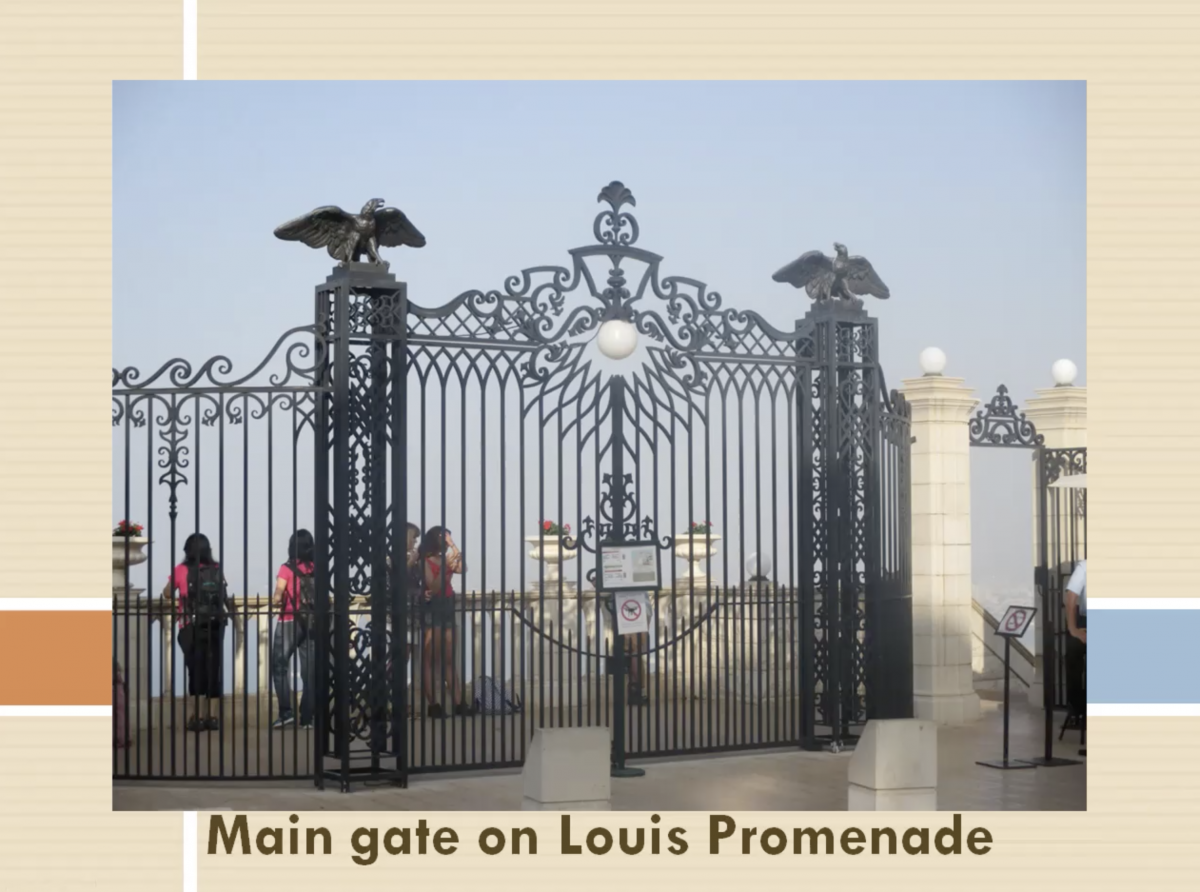
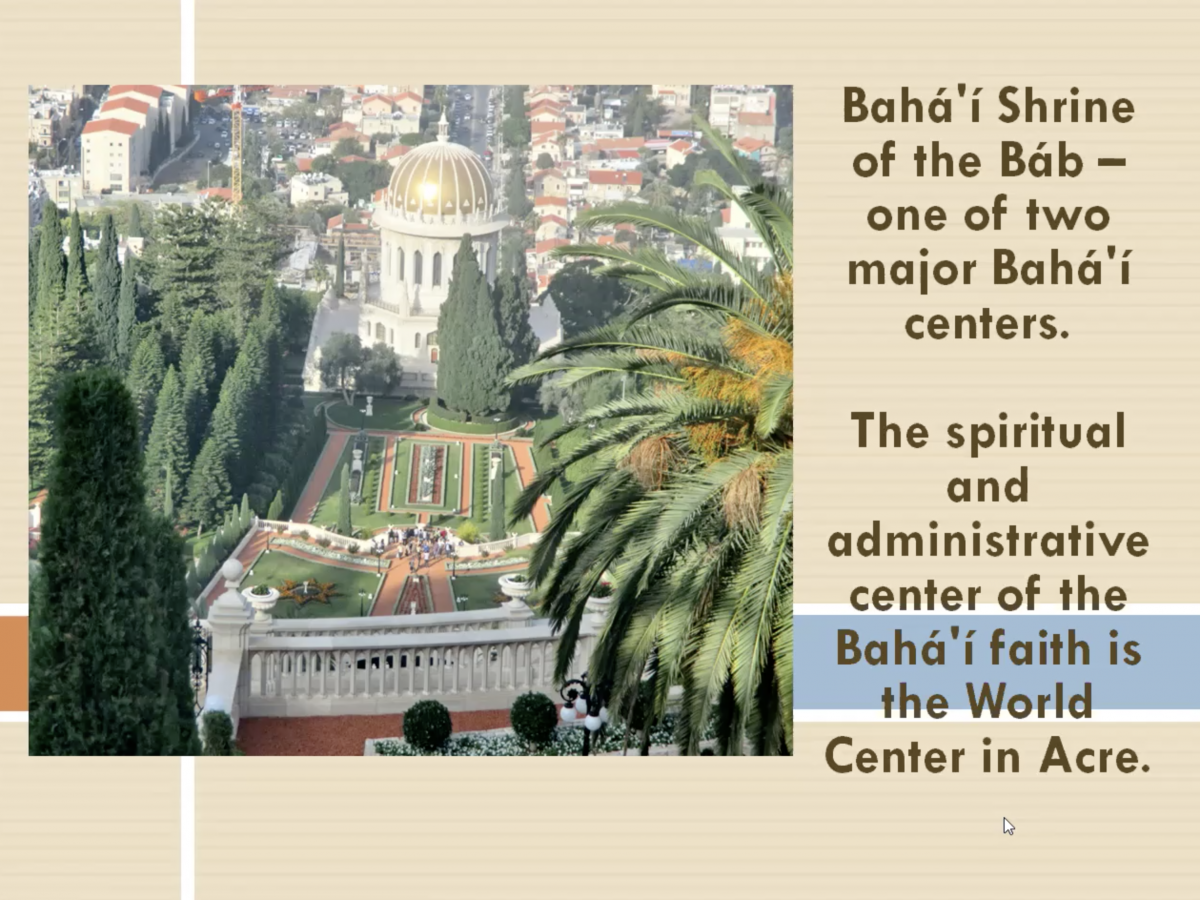
The Baha'i people were driven out of their original home in Iran, and eventually came to settle in Israel. The gardens have large spiritual significance for them and are immaculately manicured.
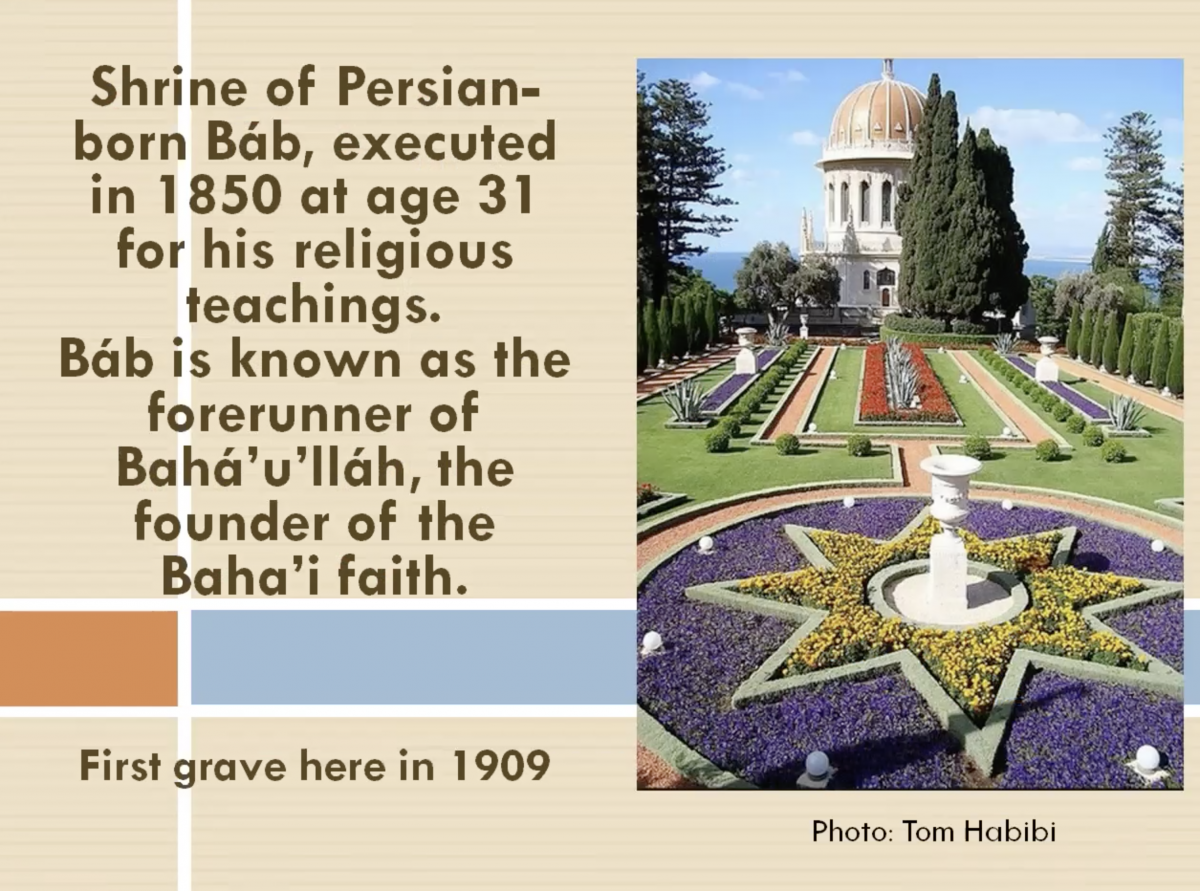
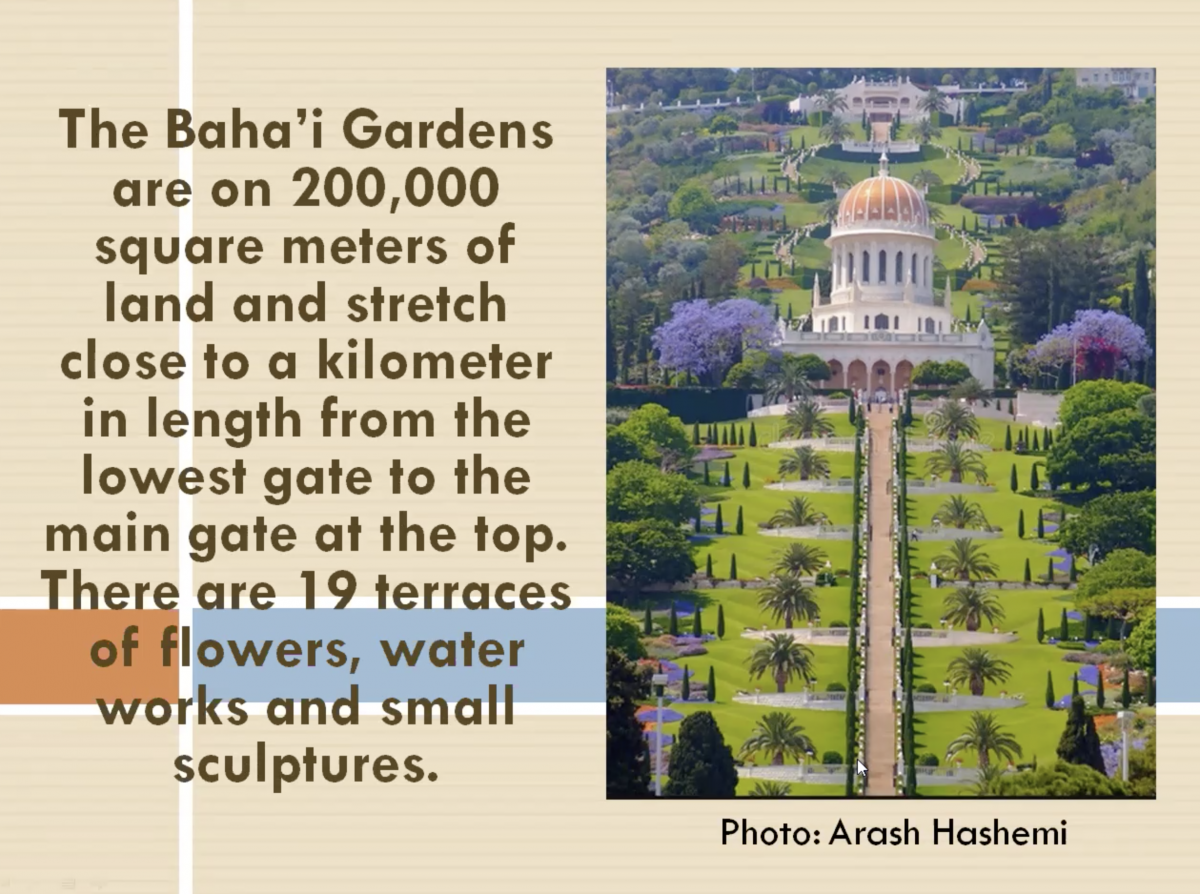
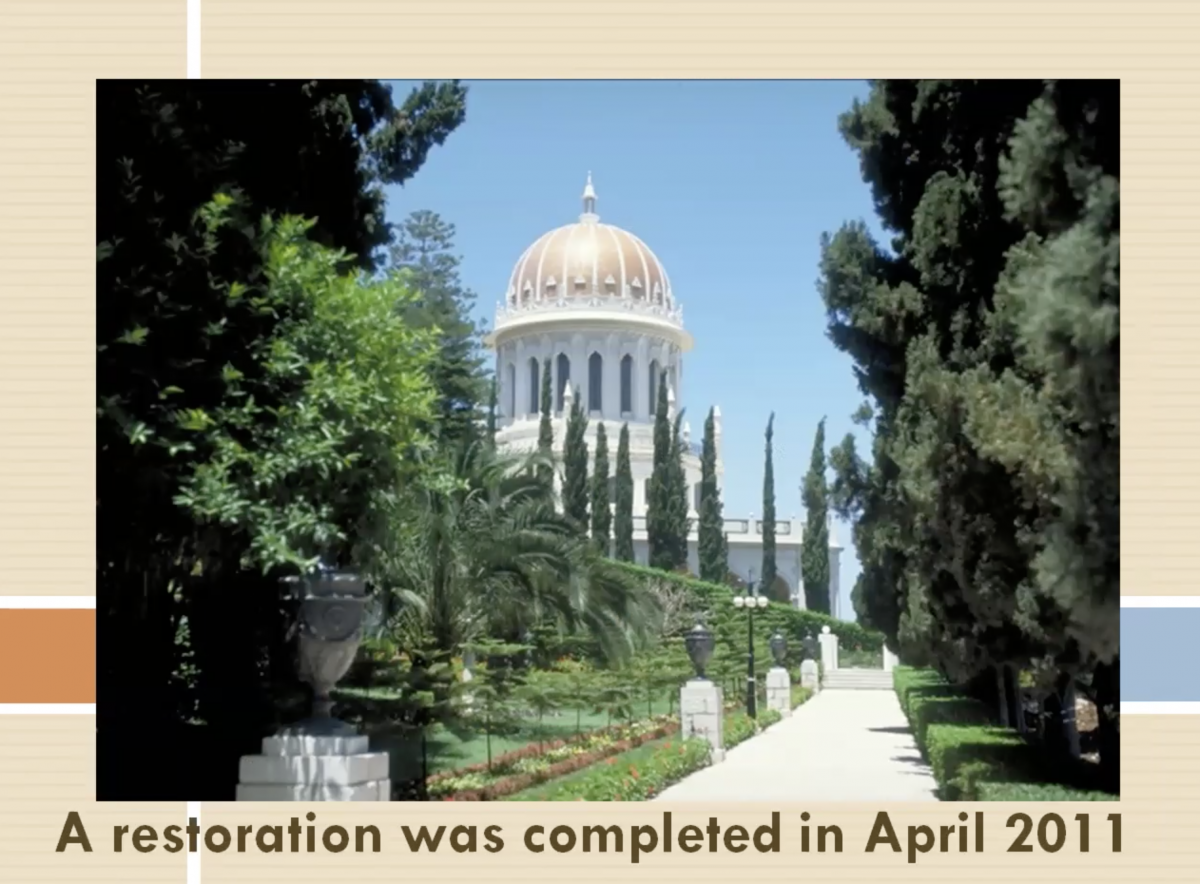
The Baha'i faith teaches that there is one God, who has revealed himself to humanity through a series of divine messengers. It emphasizes the cultivation of spiritual and moral qualities found by turning to God.
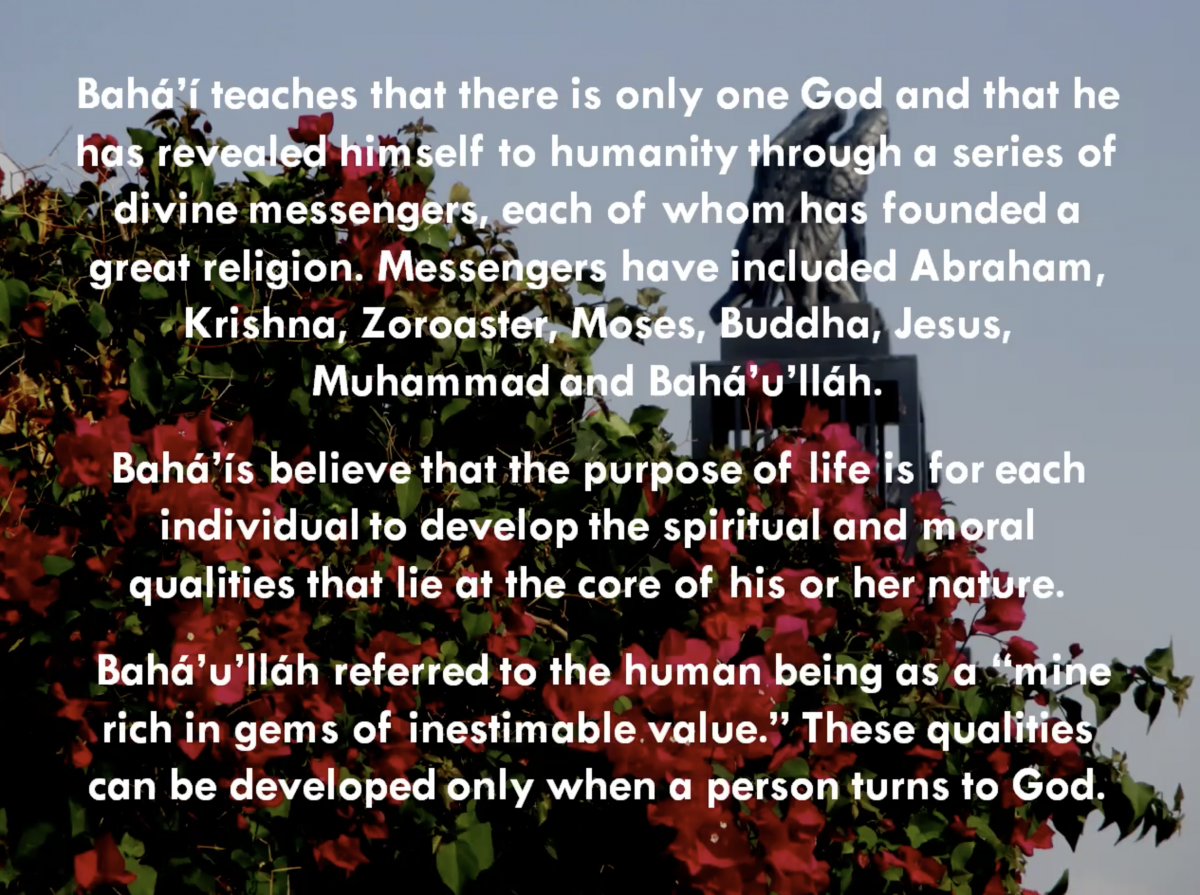
With their incredible scenery and architecture, as well as their rich history, Jordan and Israel are places you'll definitely want to add to your travel list. Thank you Mary for sharing with us!
Join us next week for yet another fun-filled VTE via Zoom call. See you at 7:00pm EDT. Cheers!



